
This month, each of my posts has been about vintage vehicles in some fashion; to continue the theme, I wanted to capture nostalgic cars circulating a racetrack. Hopefully you caught our facility tour of Redline Restorations, where trained specialists treat the malfunctions of dilapidated pieces of automotive heritage and turn them into perfect specimens. When these classics are finished with their refurbishment they compete head to head against other renovations in a match of accuracy and detail at a Concours d’Elegance show – where judges go through each automotive entry with a fine-tooth comb looking for the most perfect example of each car. However, not all of these classic cars are destined for the dewy grass surface of a golf course or country club. No, many of these older cars are rebuilt for driving, and they’re driven hard. Enter the Vintage Racer Group, a collection of ladies and gentlemen who battle on the racetrack to be the fastest in their class. This is vintage racing, the right way.
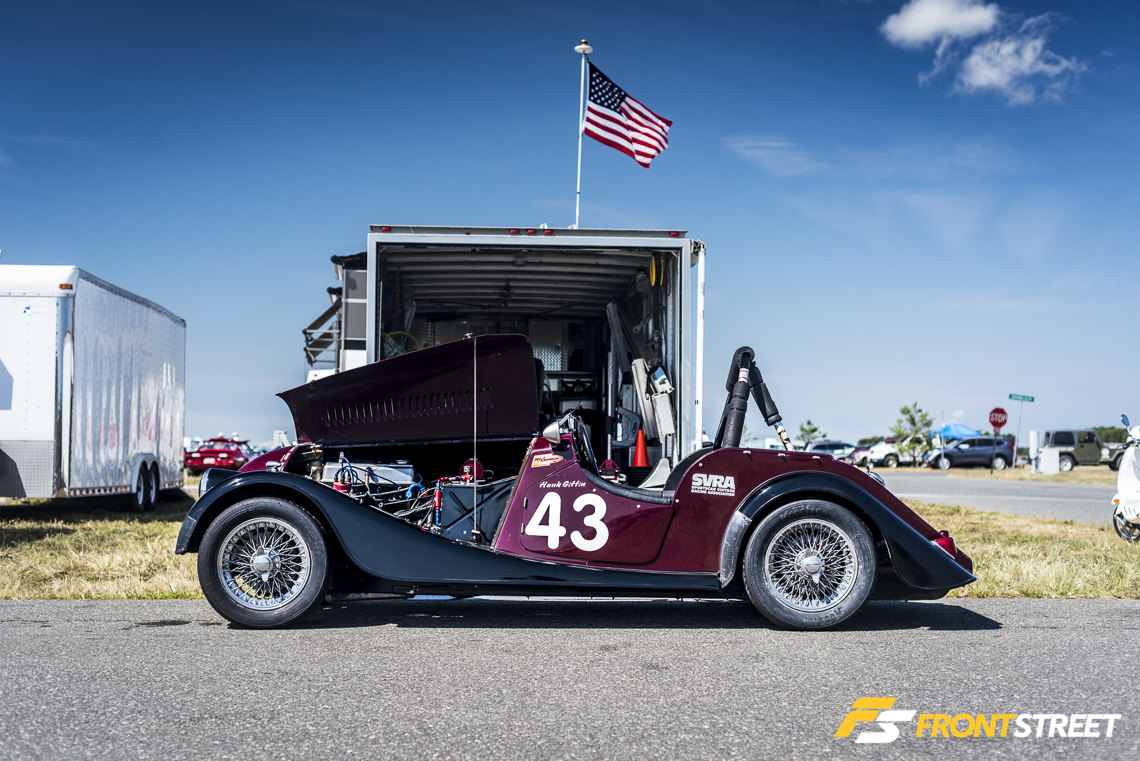
Founded in 2004, the Vintage Racer Group (VRG) was created by a small assembly of racers keen on experimenting with their own club for vintage automobiles. During the group’s creation process, the founding members had three major requirements in mind – car safety, driver safety, and a safe attitude. With those three key points covered, they knew the rest would follow. The first year in existence, they held a single event, the New Hampshire Vintage Festival. Now in its twelfth year, the group hosts eight events a year including the New Jersey Historic Races at New Jersey Motorsports Park (NJMP) in Millville.
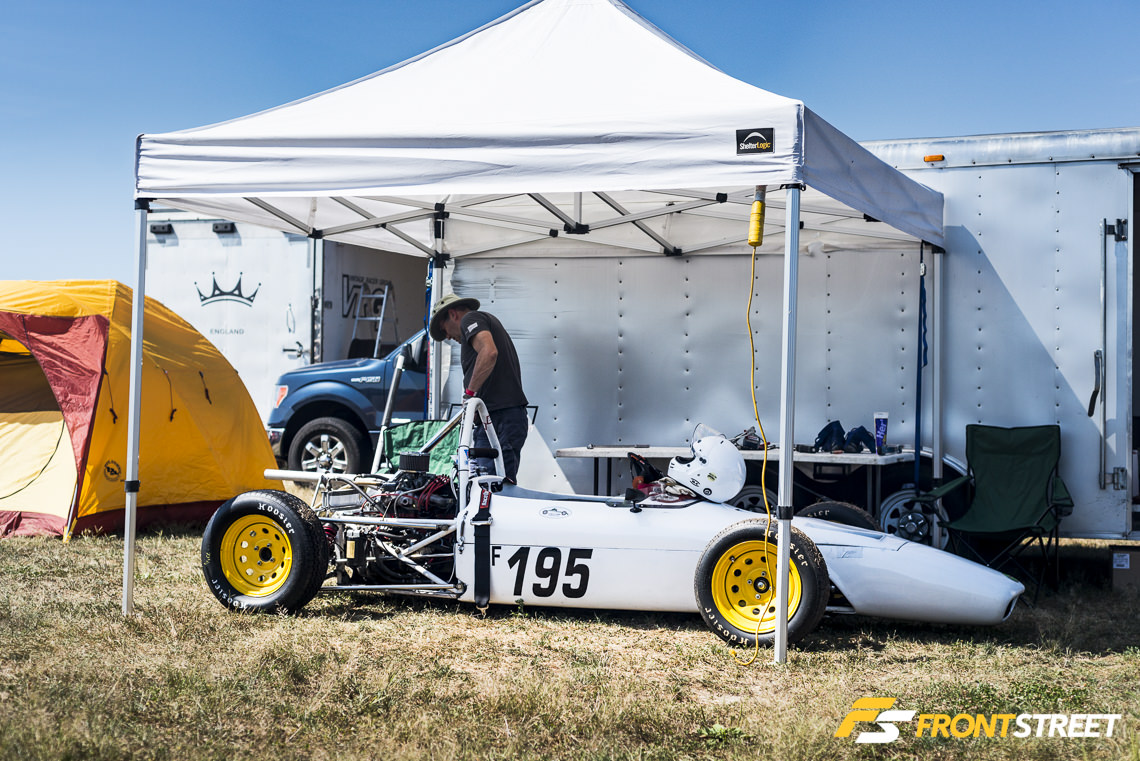
I arrived at NJMP to the soundtrack of un-muffled rumbles caused by each class performing their qualifying laps. After parking my car, the aroma of race gas and exhaust fumes filled my nostrils from the dozens of makeshift pit areas that lined the infield of NJMP’s Lightning Circuit.
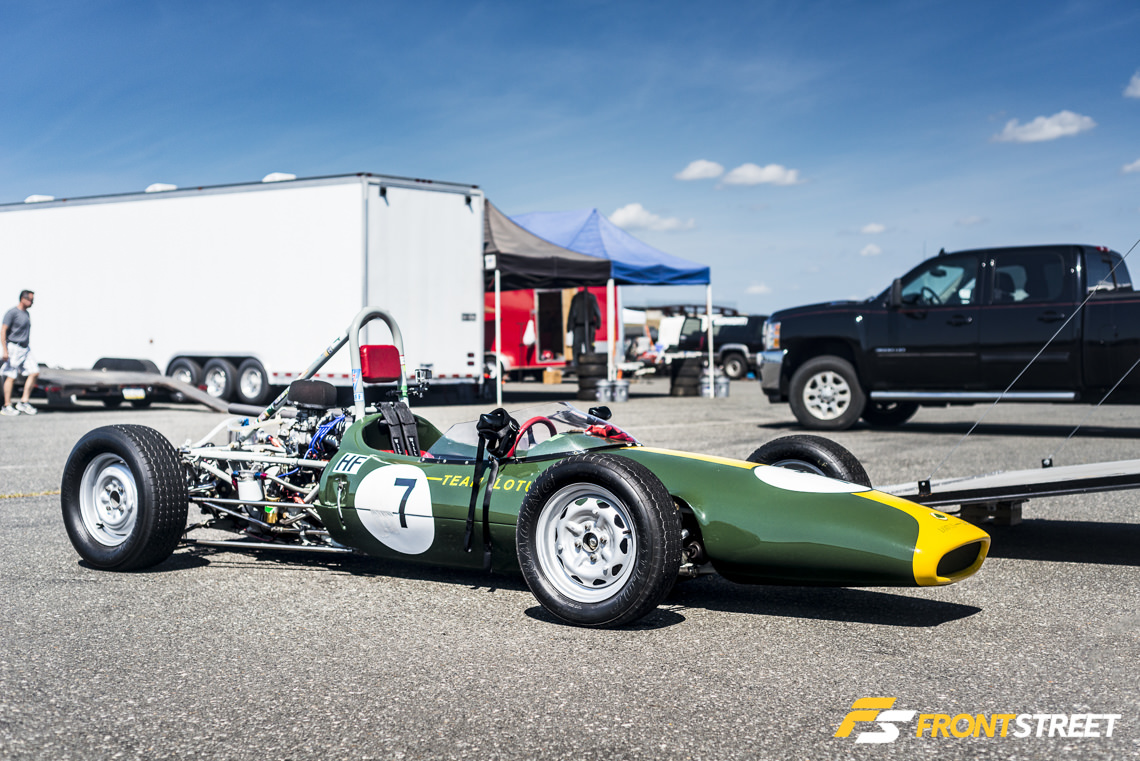
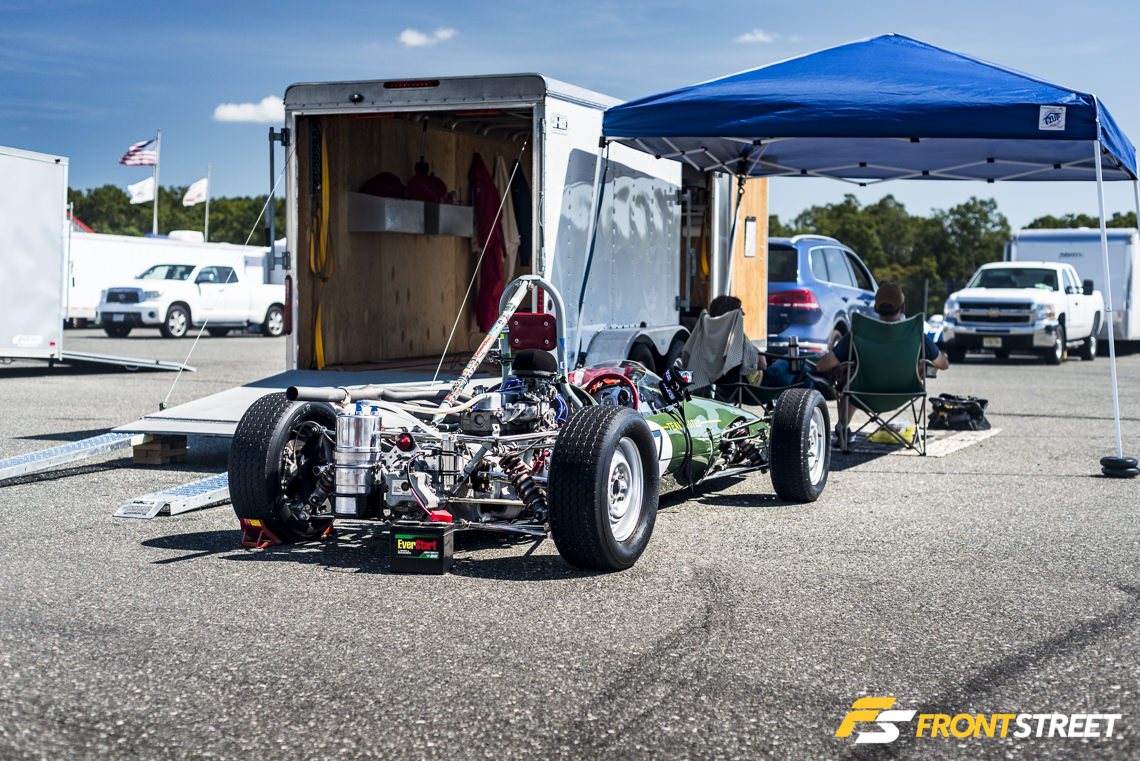
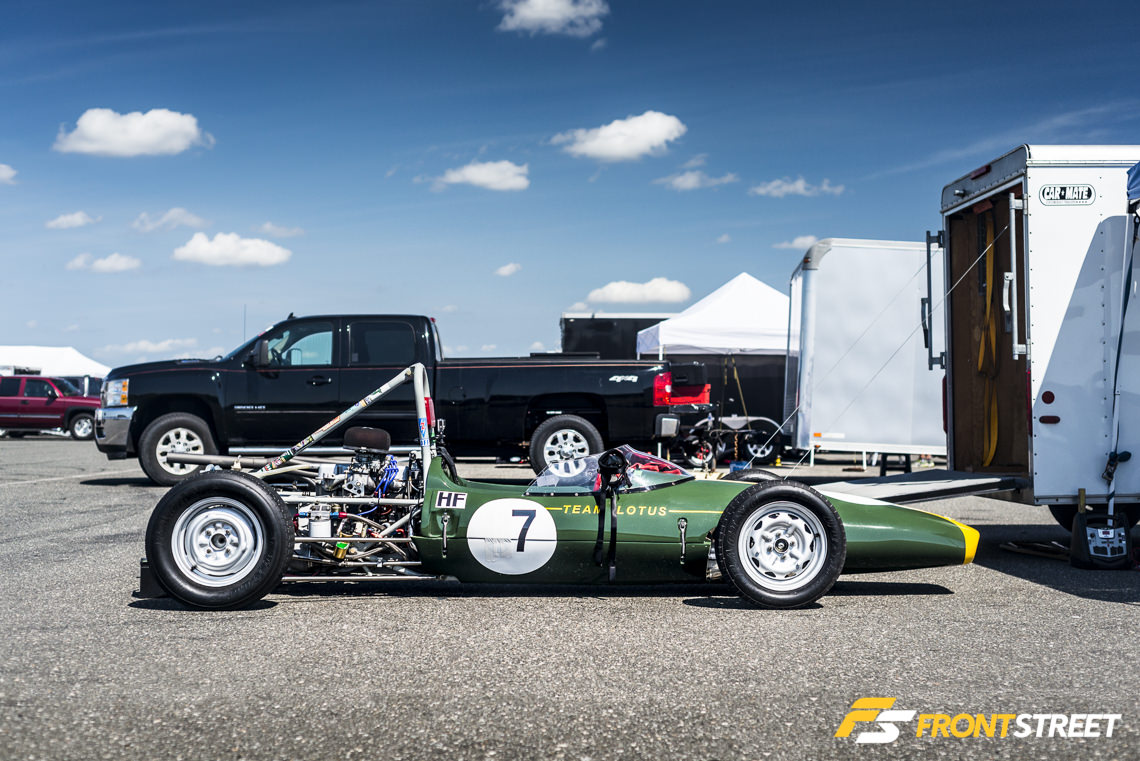
Though diverse in their classes, cars like Lou Parrotta’s 1967 Lotus Mark 51 all bear similar traits: low weight, low power, low grip, and high fun factor! The Mark 51 – a reincarnation of the Lotus 22 – is equipped with a tiny 1,098cc engine that produces just 90bhp, but in a Formula Junior that weighs around 1,000-pounds it’s more than enough for an exhilarating experience.
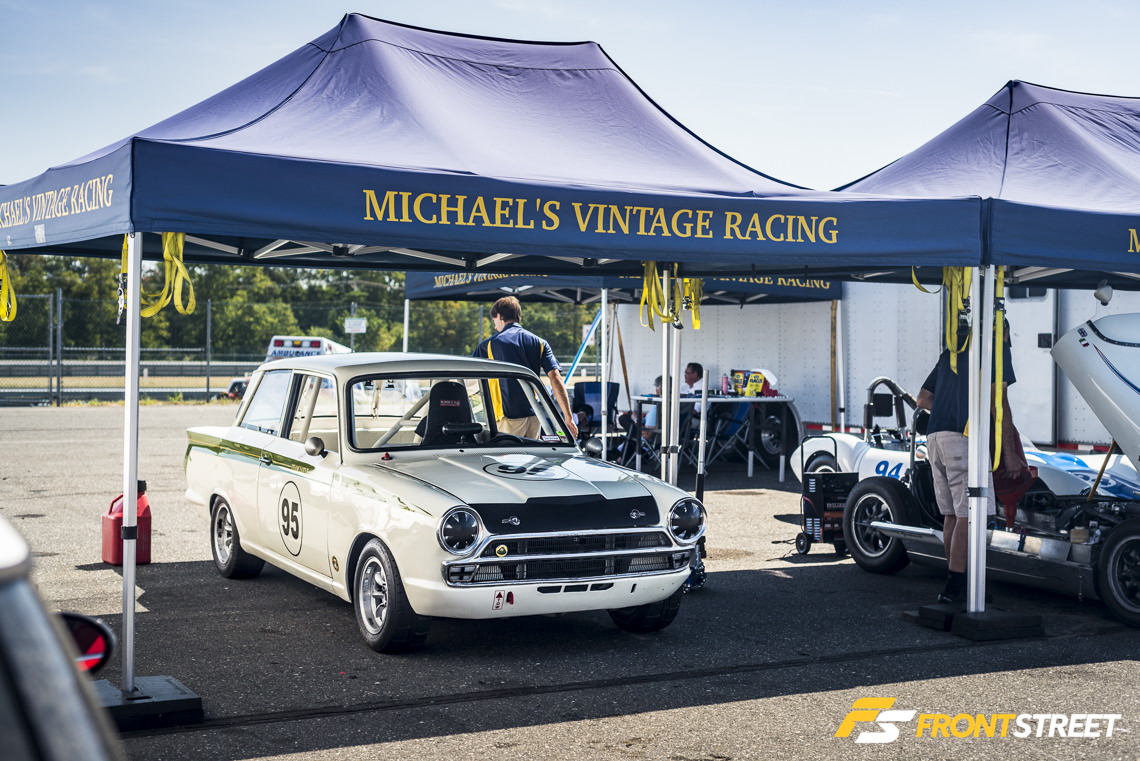
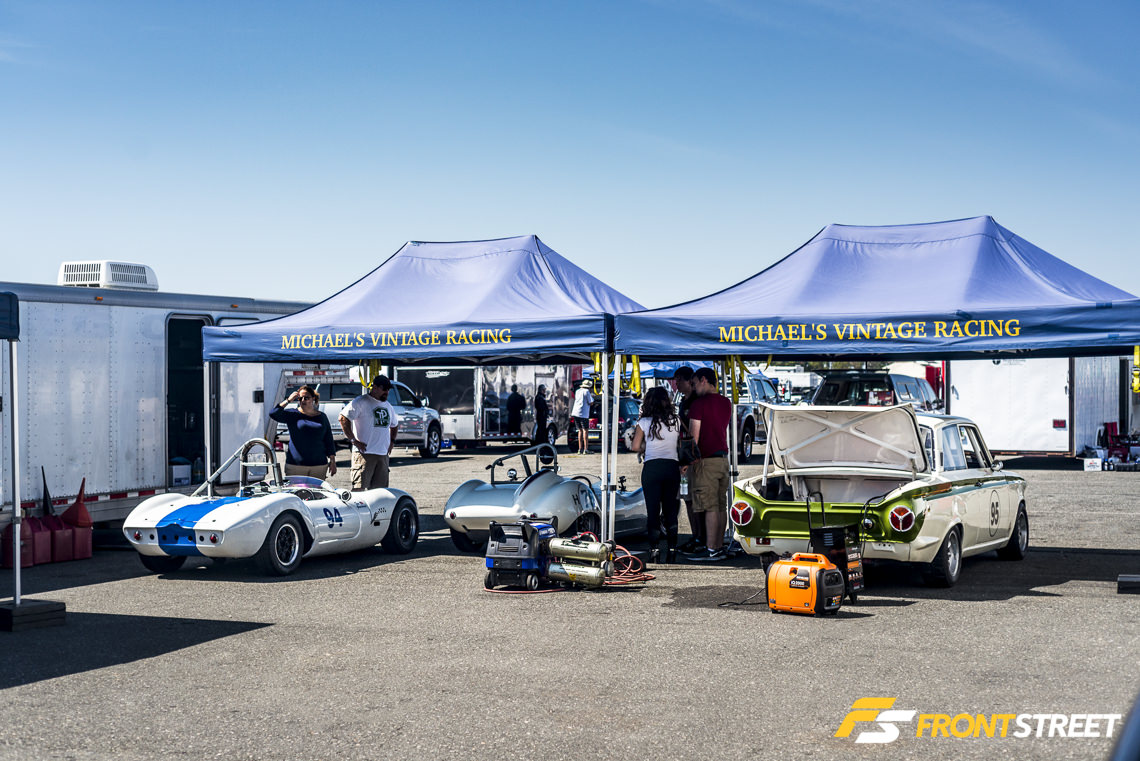
Michael’s Vintage Racing – a father and son automotive shop from Hopewell Junction, NY – specializes in vintage racing assistance for the average Joe. Whether it’s restoring an old vehicle, preparing one for a racing weekend, or transporting it to the track for you, Michael’s does it all to provide their customer the ultimate luxury of a worry-free classic racecar. This weekend they brought a few of their own vehicles, including a 1966 Ginetta G4 (#94), a 1960 Lola-OSCA Mk1 (#76), and a 1965 Lotus Cortina (#95).
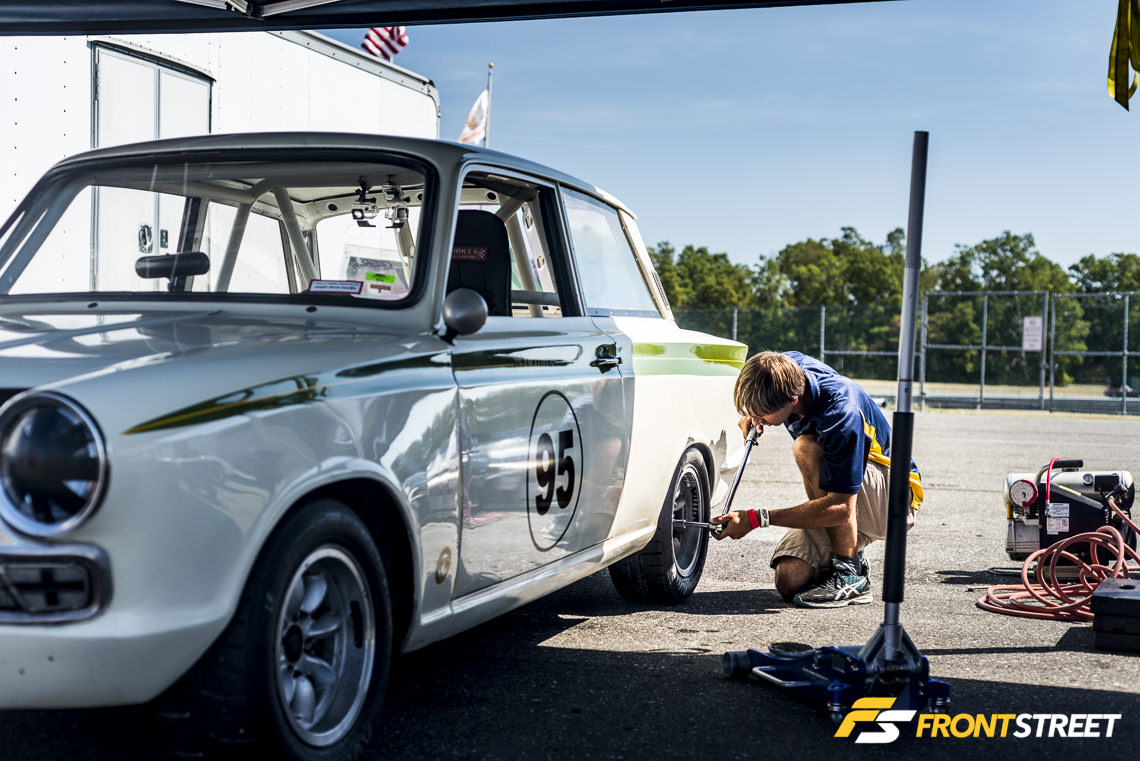
Pay attention to this photo of the lug nuts being torqued, it will eliminate some doubt later in the article.
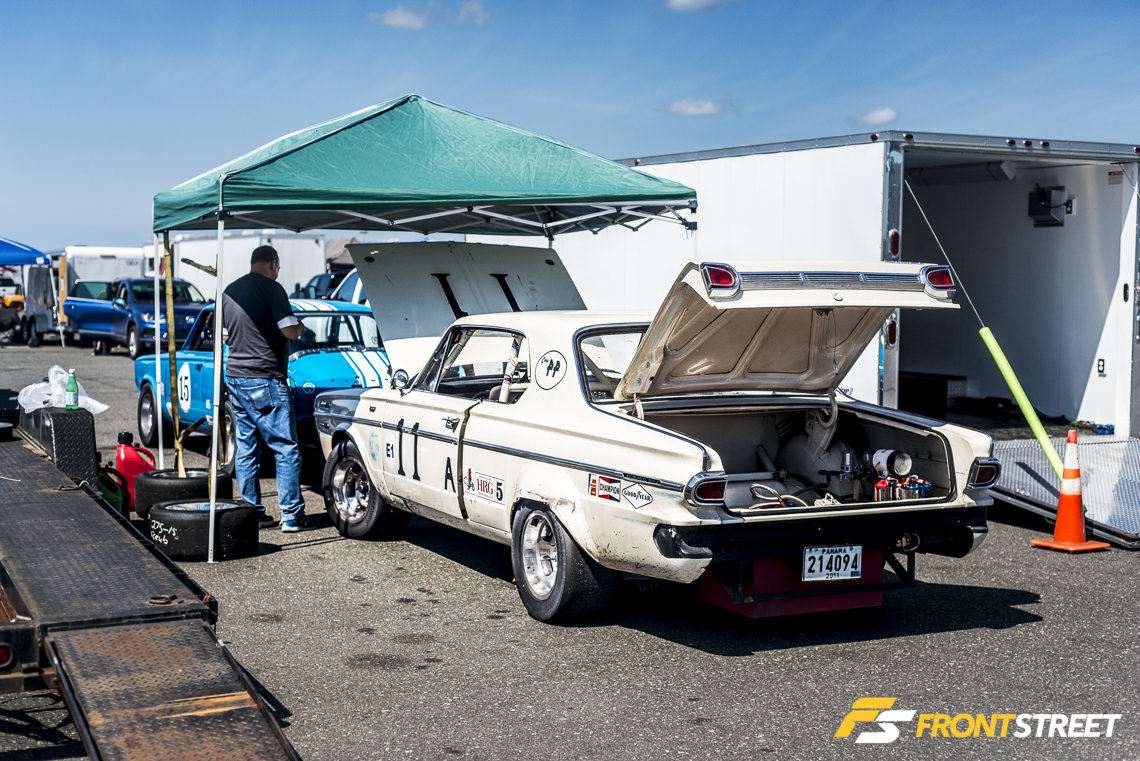
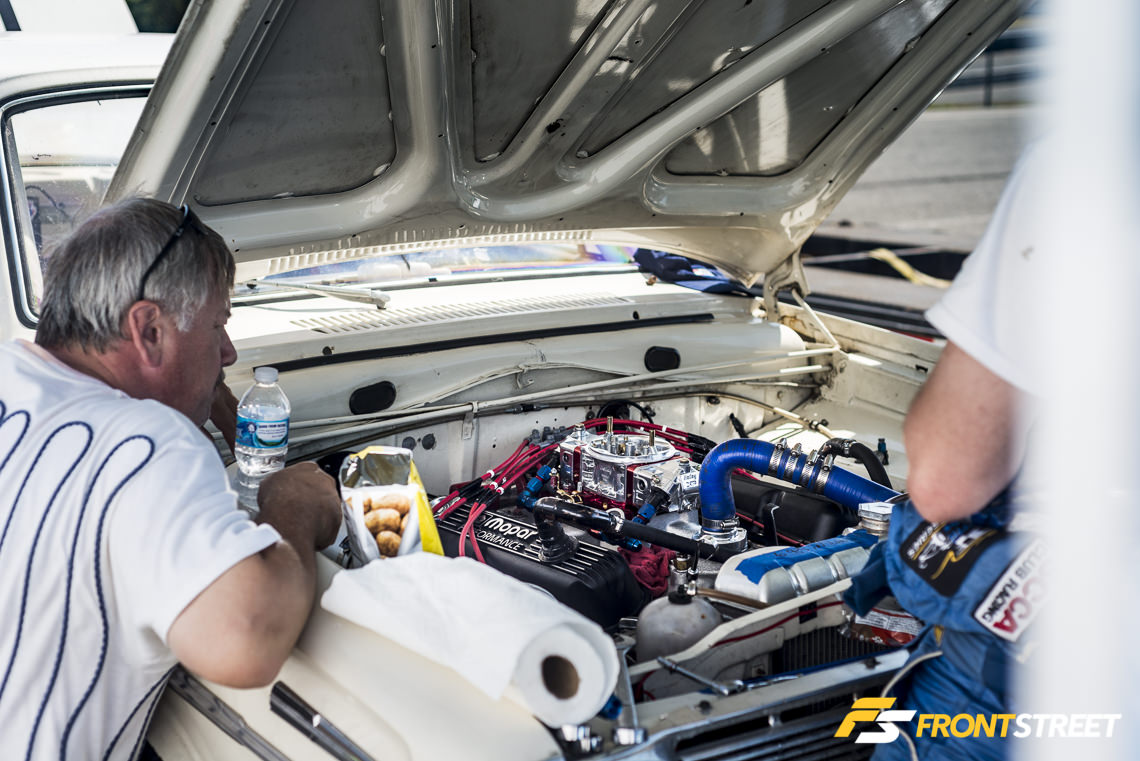
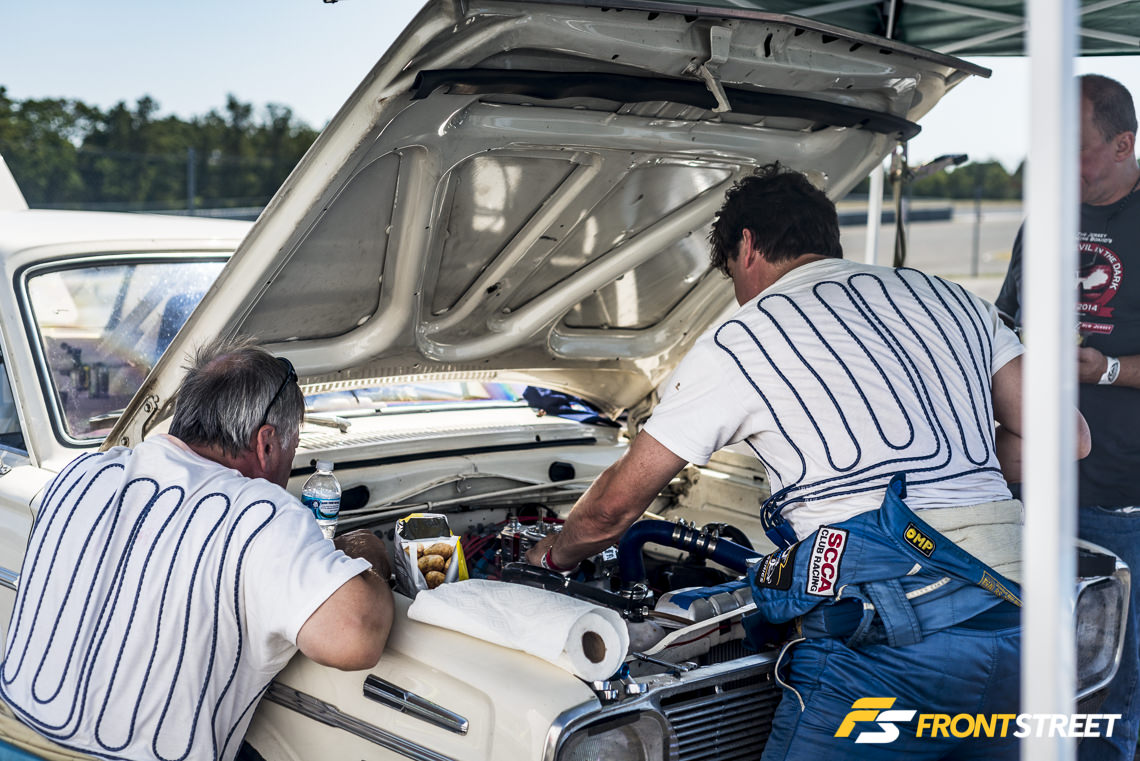
In the pits of Robert Benson’s 1966 Dodge Dart and James Benson’s 1966 Plymouth Barracuda, the guys were busy trying to decipher an issue with the Dart’s engine, while sneaking a little lunch before the next session. As proof of their repair skills, the car was flying out on track in the later sessions.
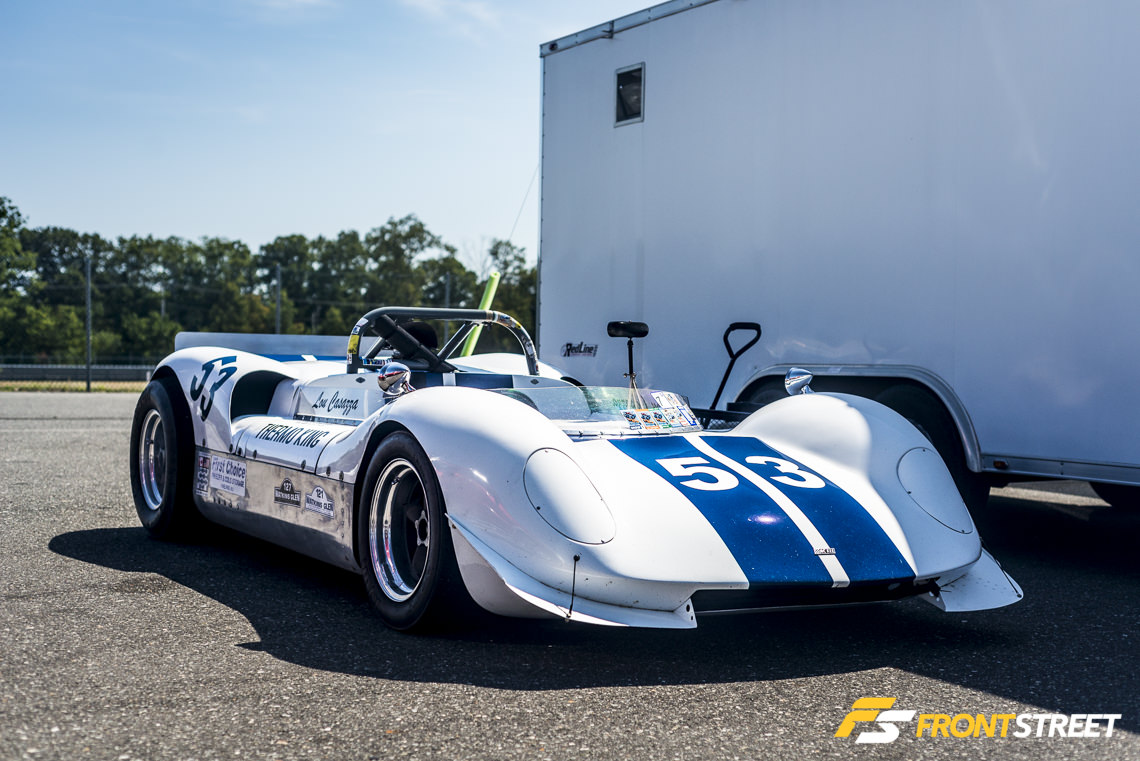
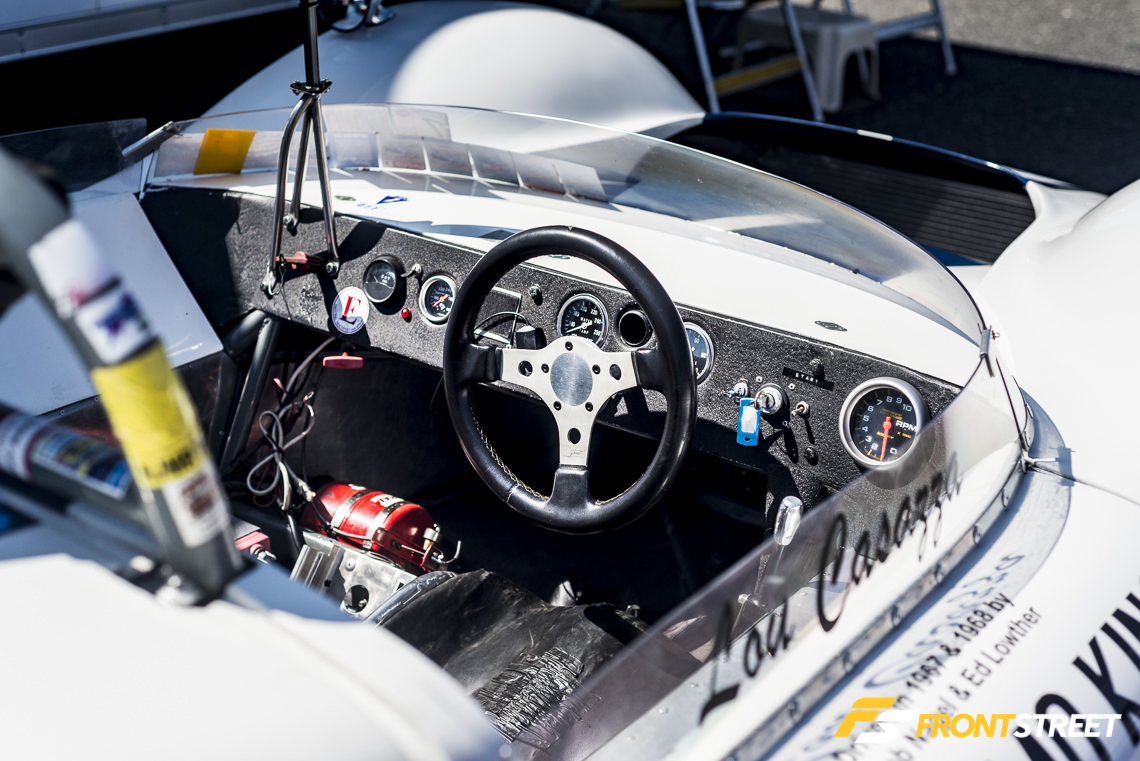
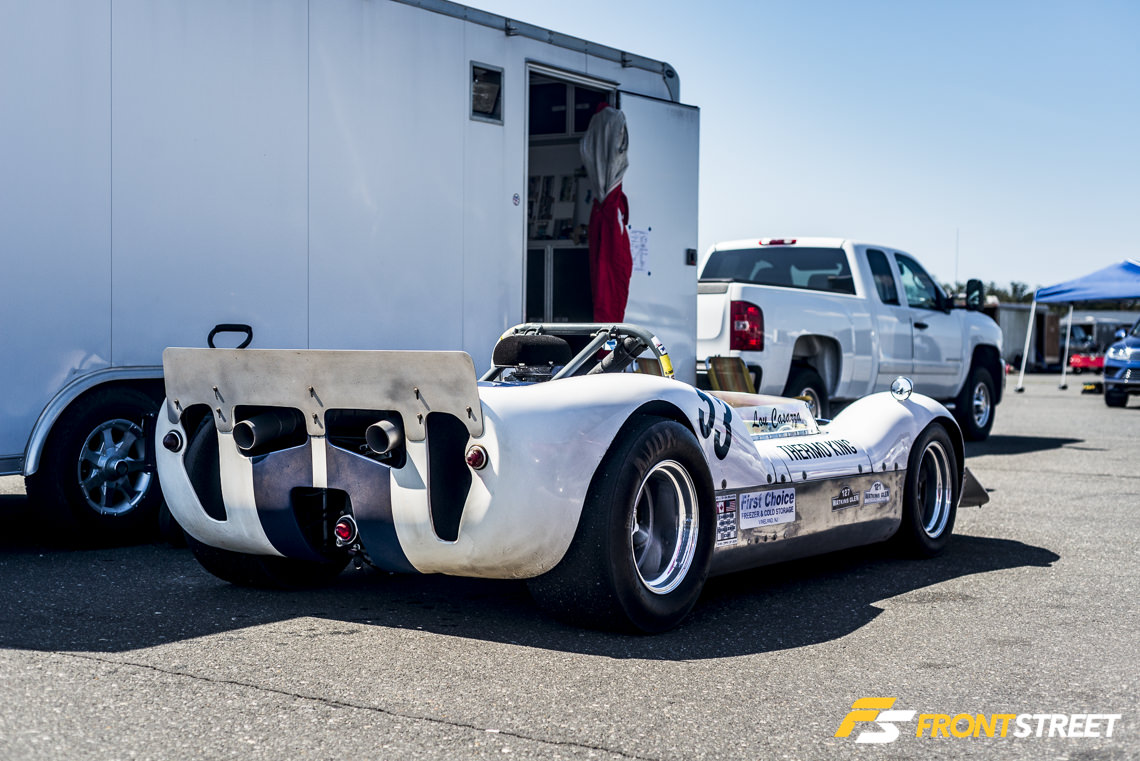
One of the fastest cars of the weekend was Louis Casazza’s 1967 McKee MK 7. This car qualified first in Group 3, and ended up getting into a pretty fierce battle with a Camaro out on track later in the afternoon race.
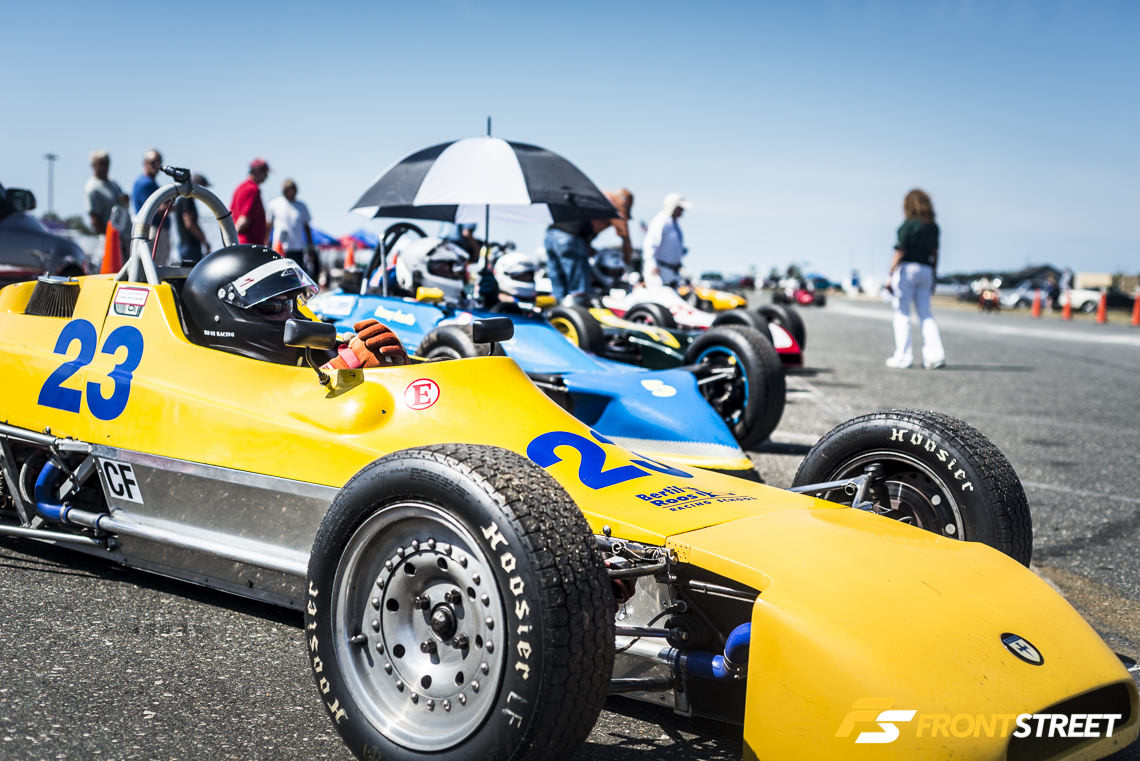
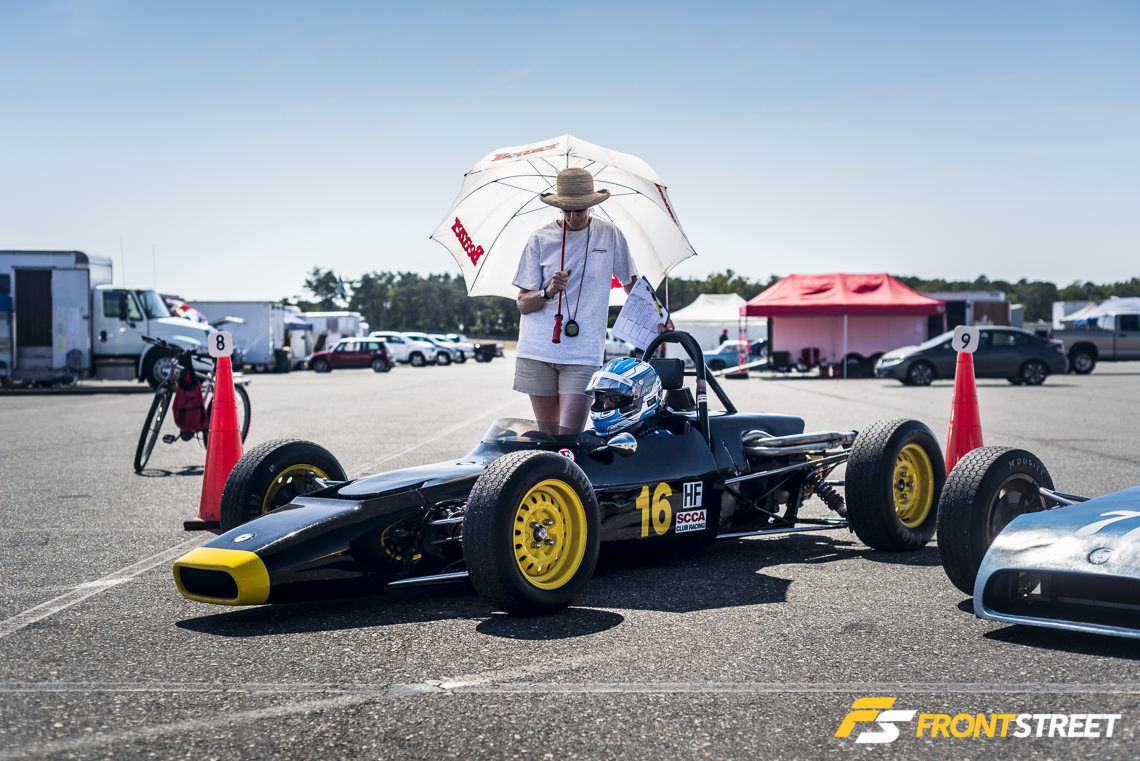
As the lunchtime break drew to a close, cars began to take their places on the starting grid and it was time for the afternoon races to start. With twenty-five entrants, the Formula Ford/Formula Junior class was the second most popular of the five groups racing.
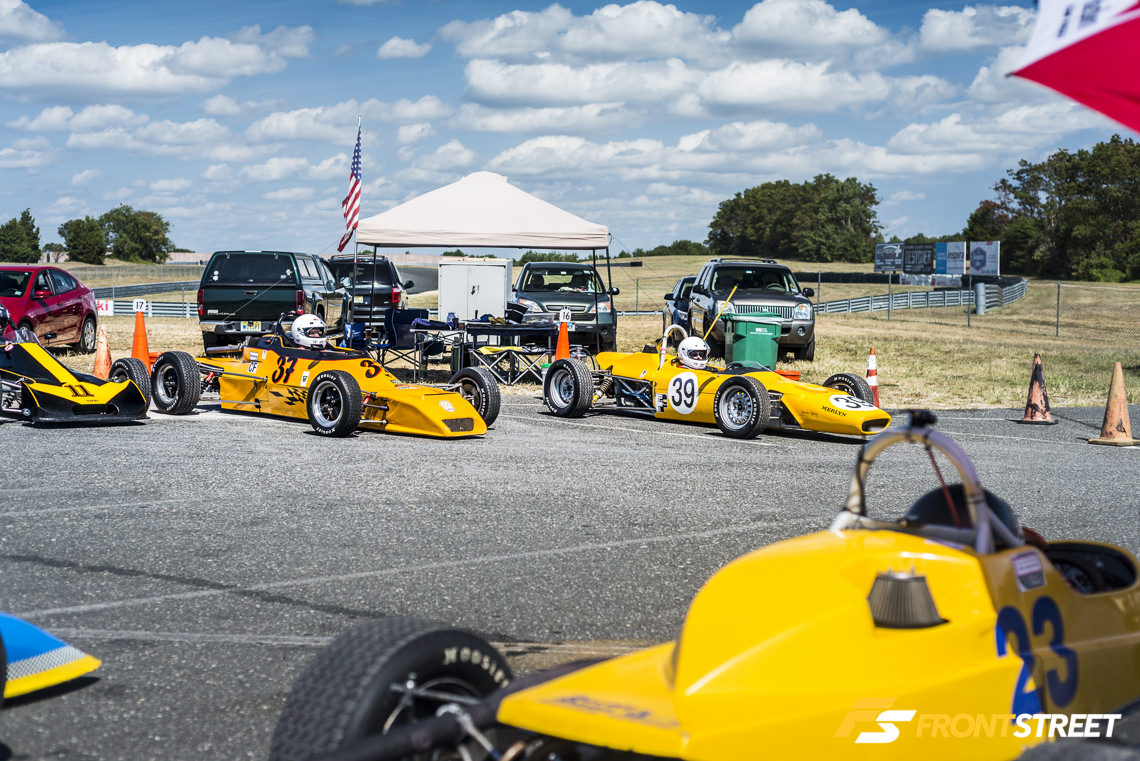
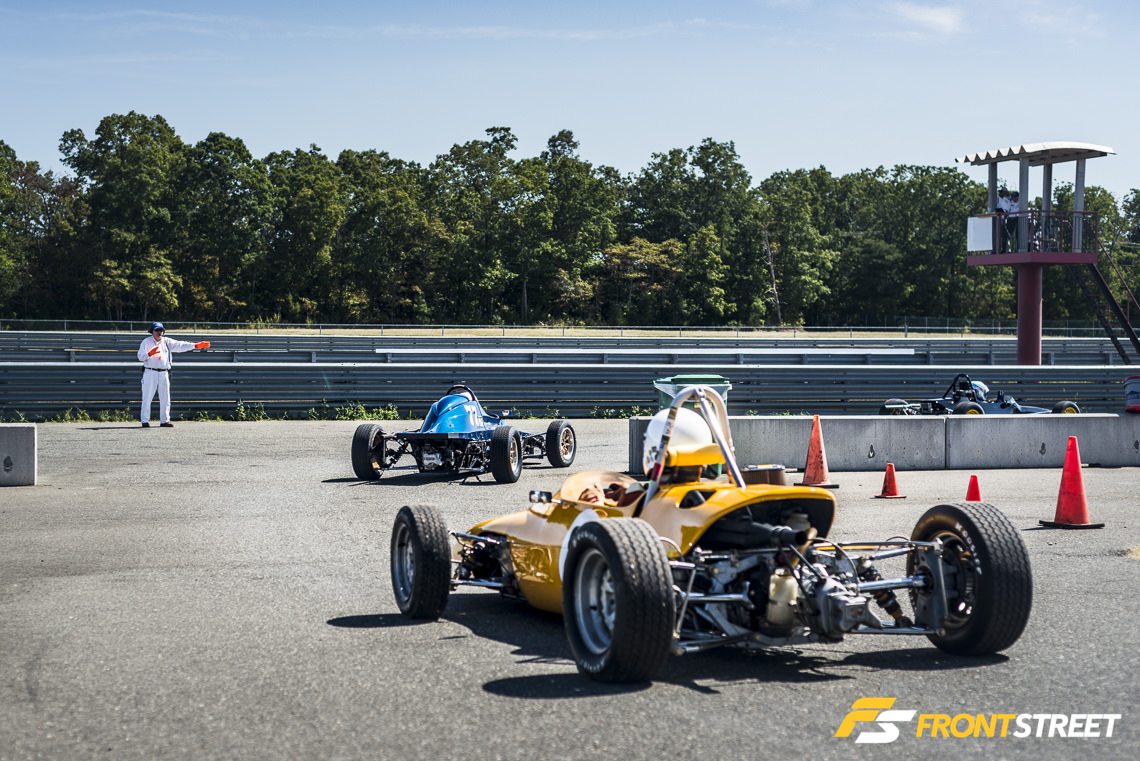
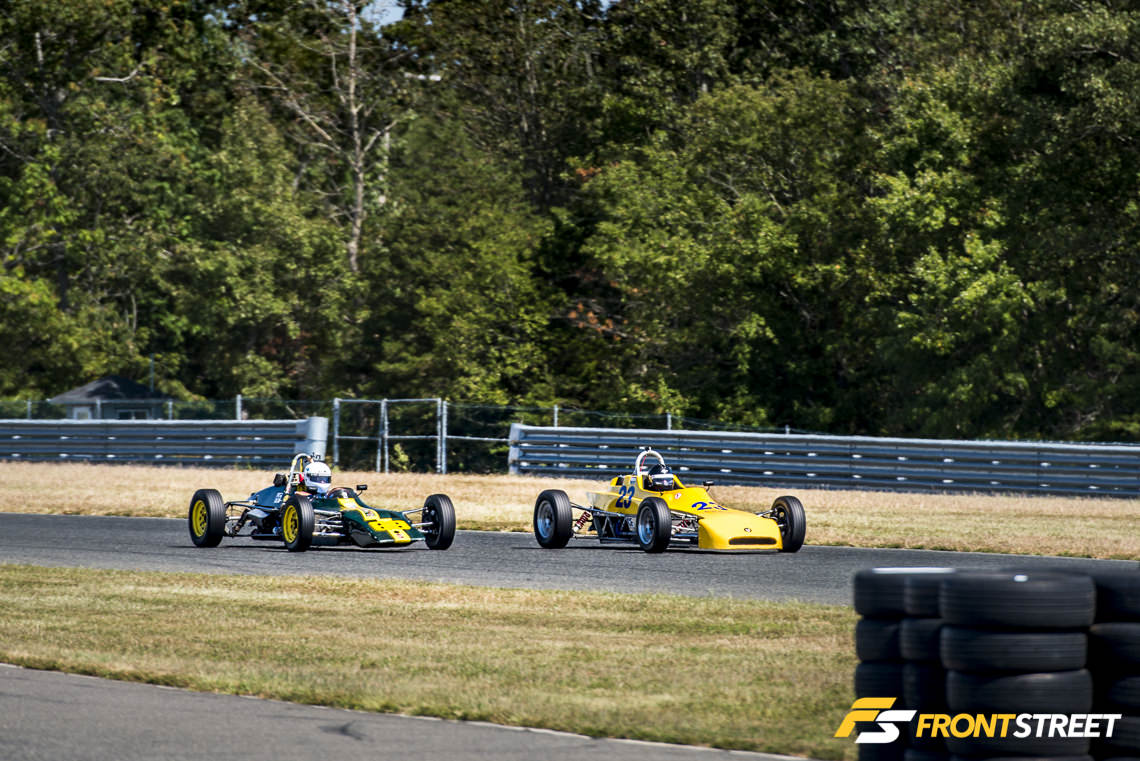
The races use a rolling start to begin the madness. A pace car starts a slow warm-up lap beginning in pit lane, which allows the cars to filter out onto the track from their grid positions in an orderly manner, but they must remain in their qualifying order. At the conclusion of one lap, the pace car re-enters pit lane as the green flag is waved and the cars begin accelerating in unison, now free to battle one another and attack the corners as they jockey for position.
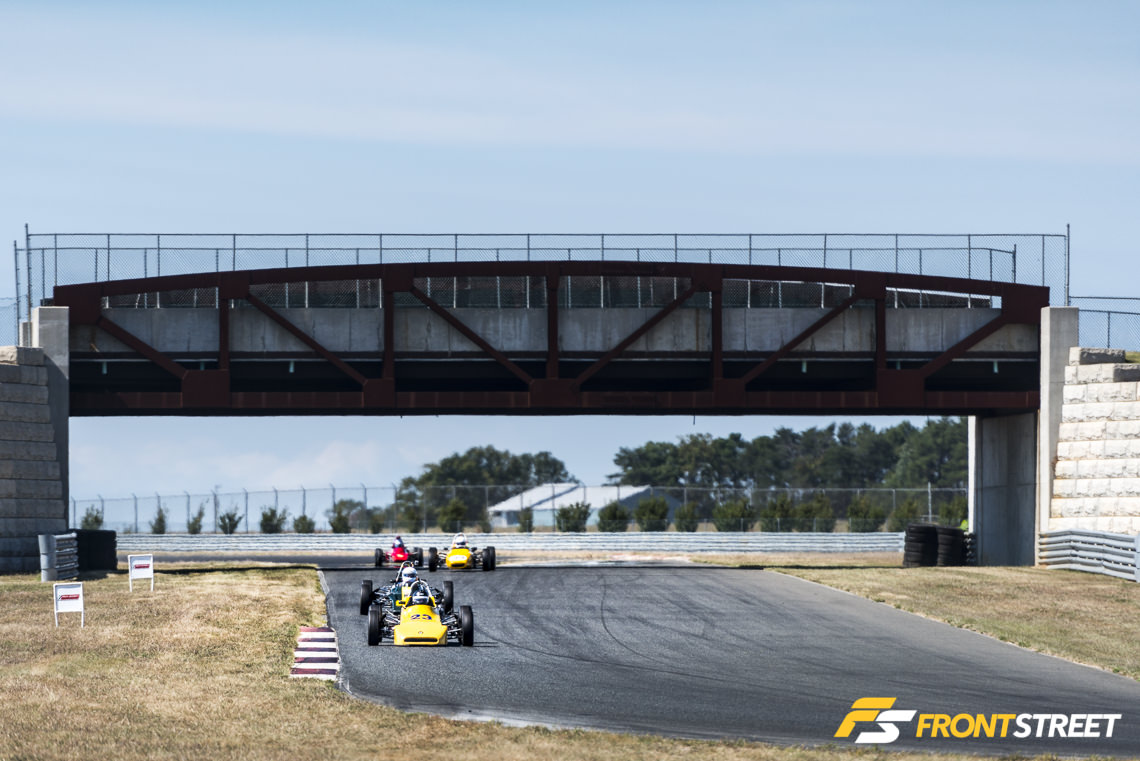
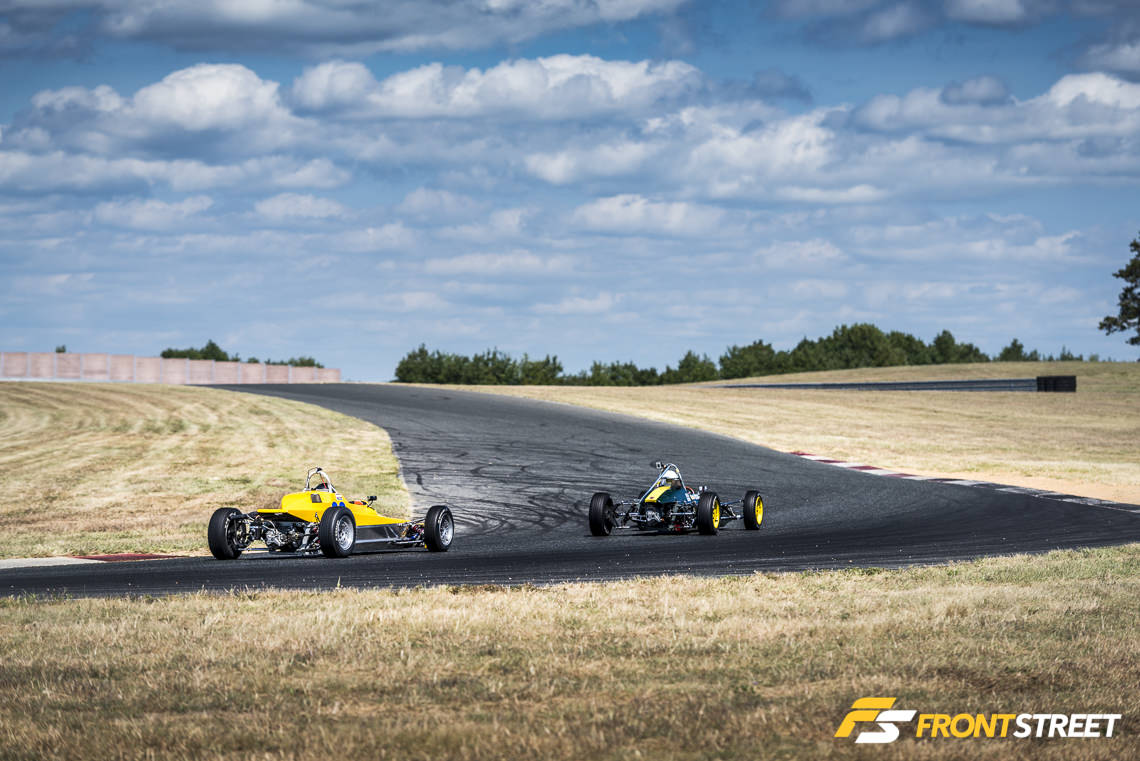
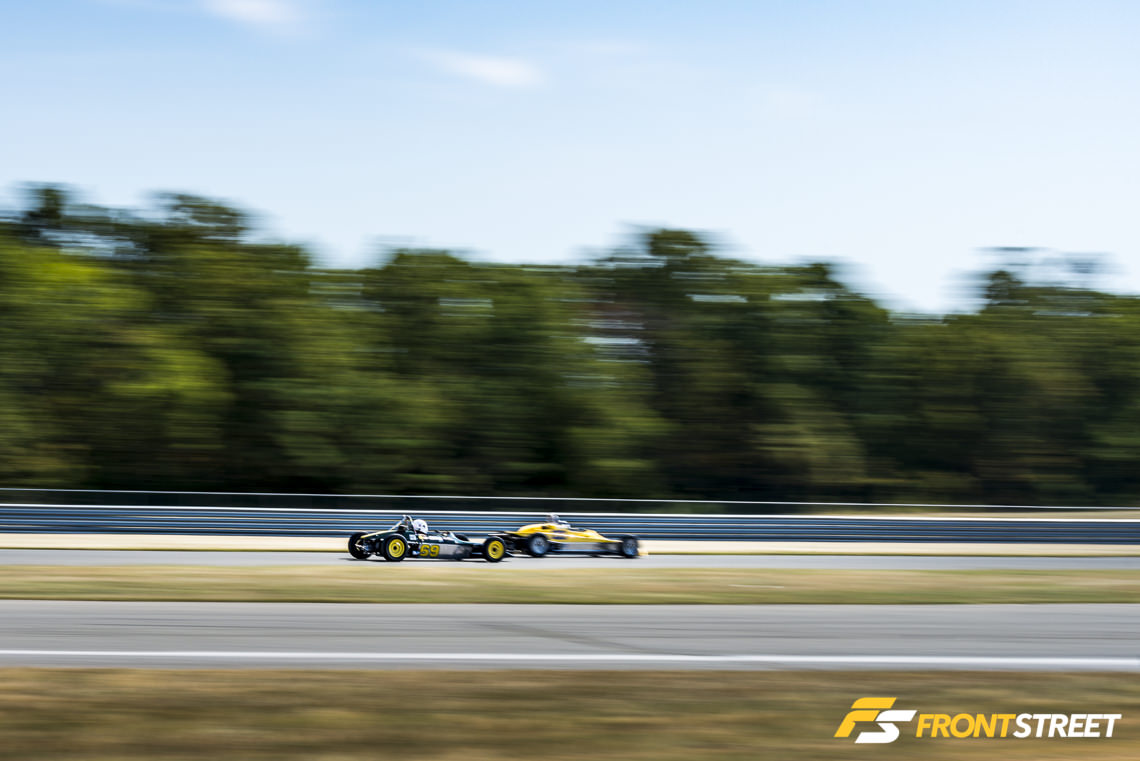
The battle for first and second place between Joseph Griffin’s 1981 Crossle 45F (#23) and Christian Morici’s 1971 Lotus 69 (#69) was one of the highlights of the day. The Crossle had to fend off passing attempts by the Lotus throughout the entire race, and the two were matched for straight-line speed as they approached the Start/Finish line each lap.
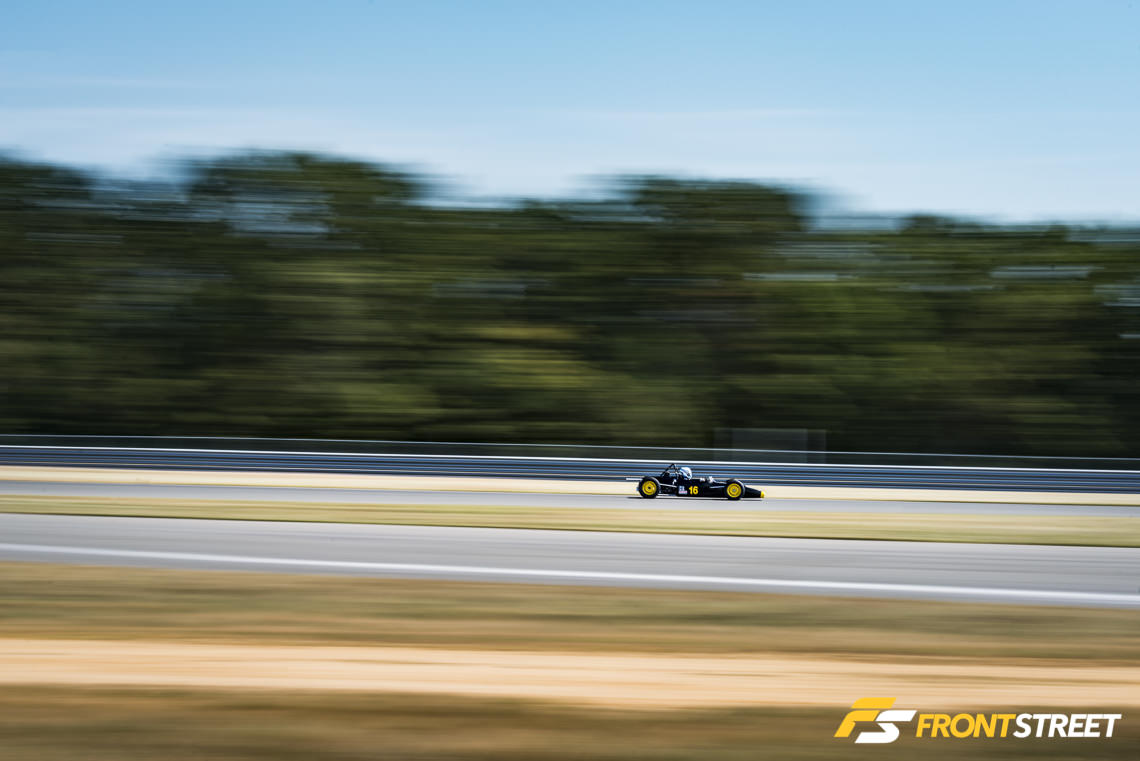
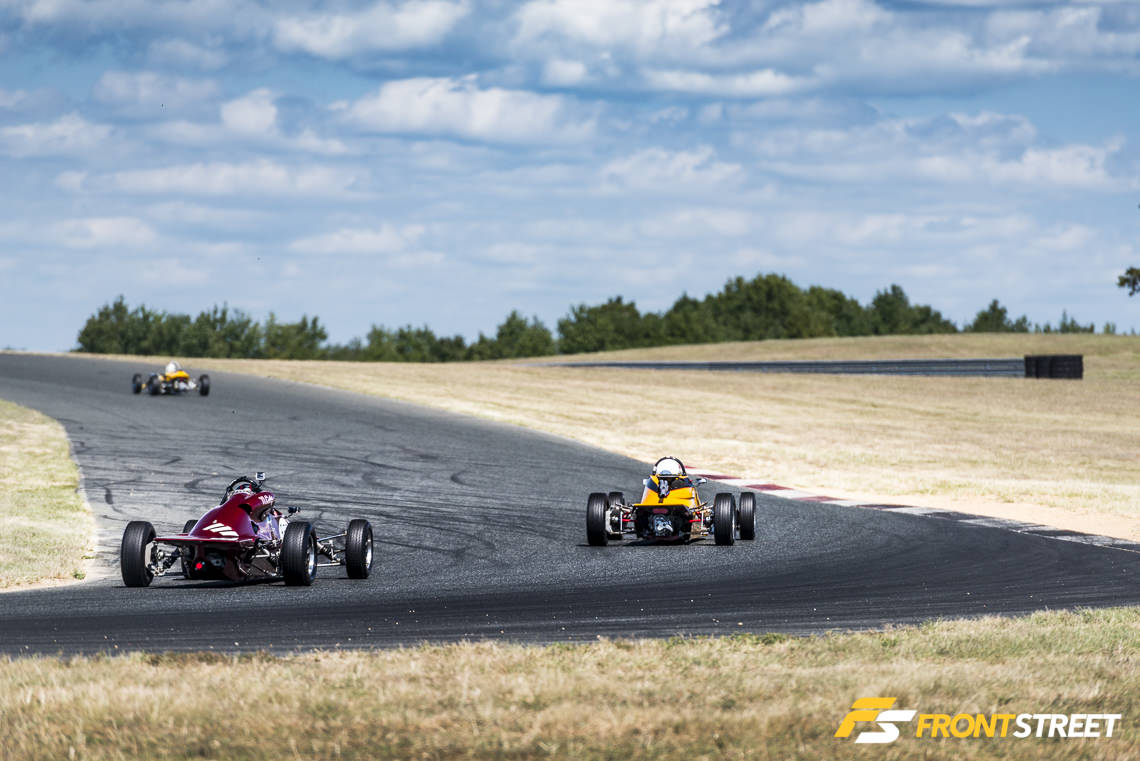
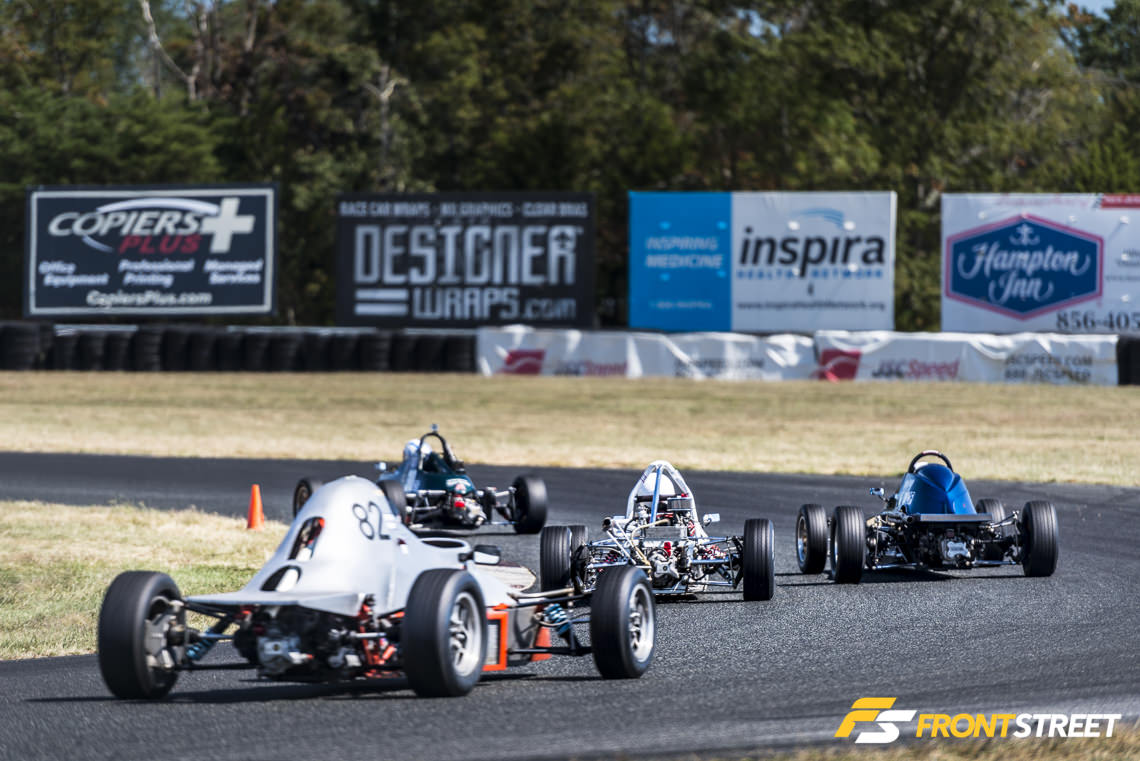
Elsewhere in the race, these open-wheel racecars could be seen squeezing two and three cars wide through some very narrow turns. Passing on the outside isn’t the easiest undertaking when the cars are lacking tire width, but some managed to pull it off.
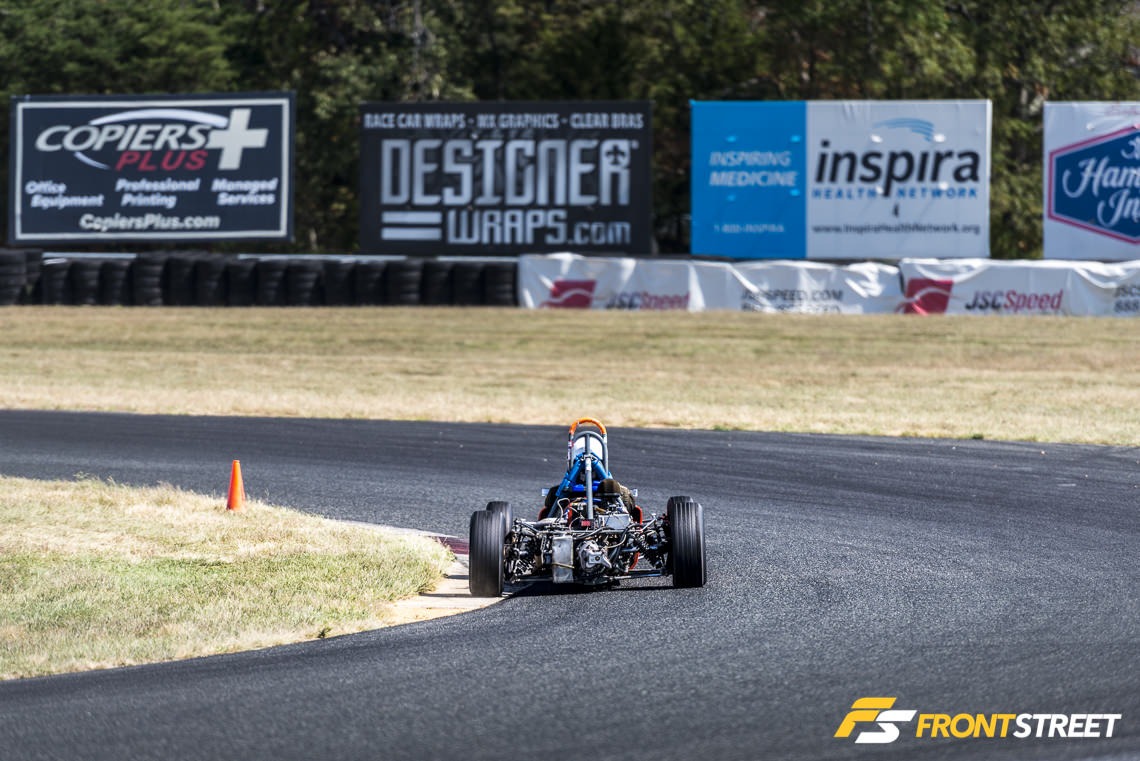
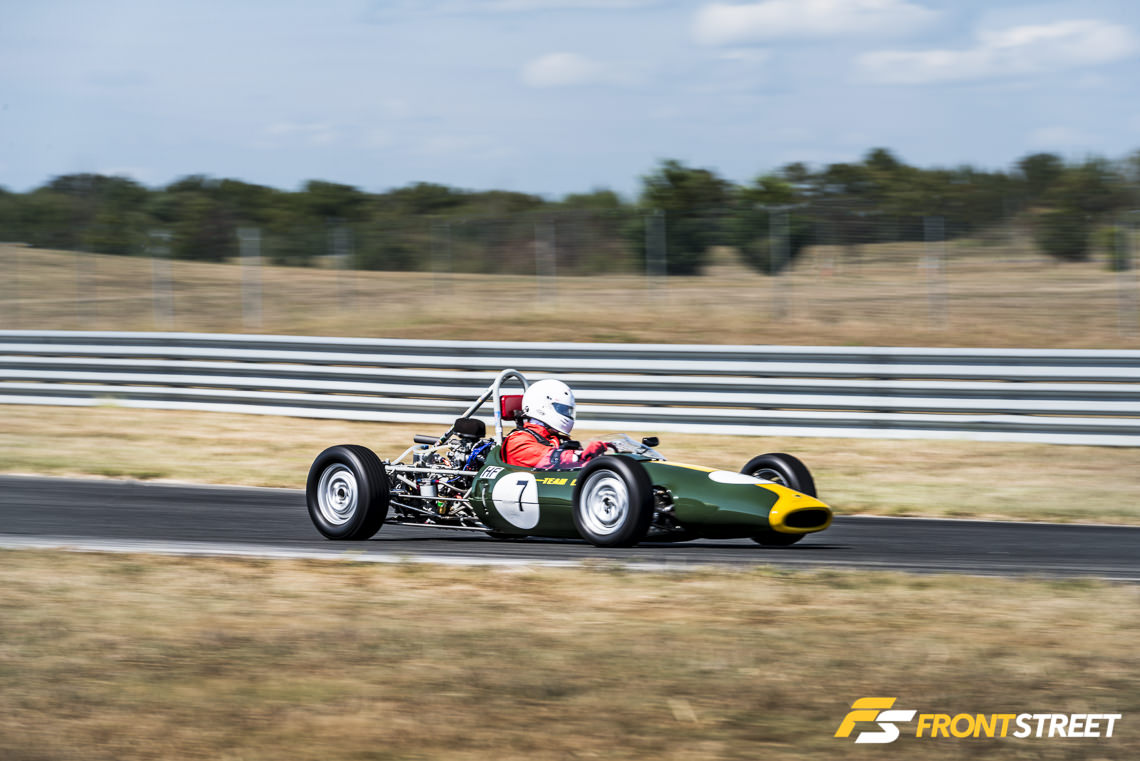
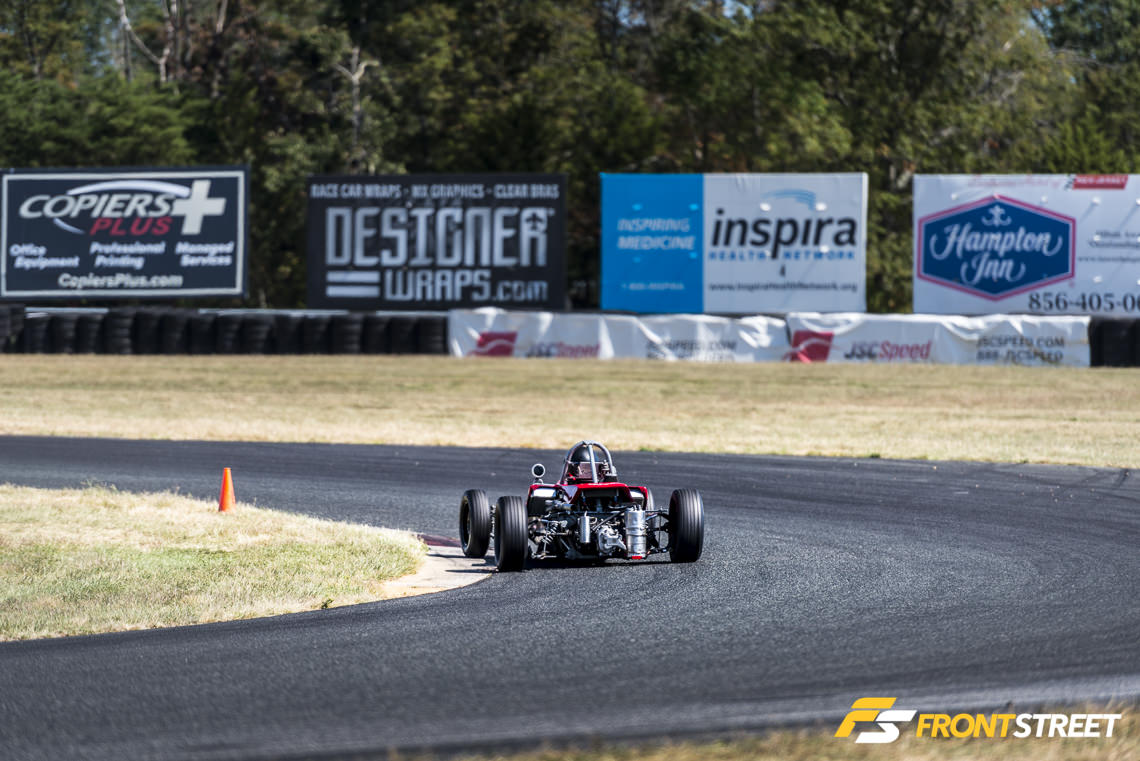
Because these cars don’t have much bodywork, it is much easier for the drivers to hit the apex of the turns, as they could see exactly where they were placing the car on corner entry.
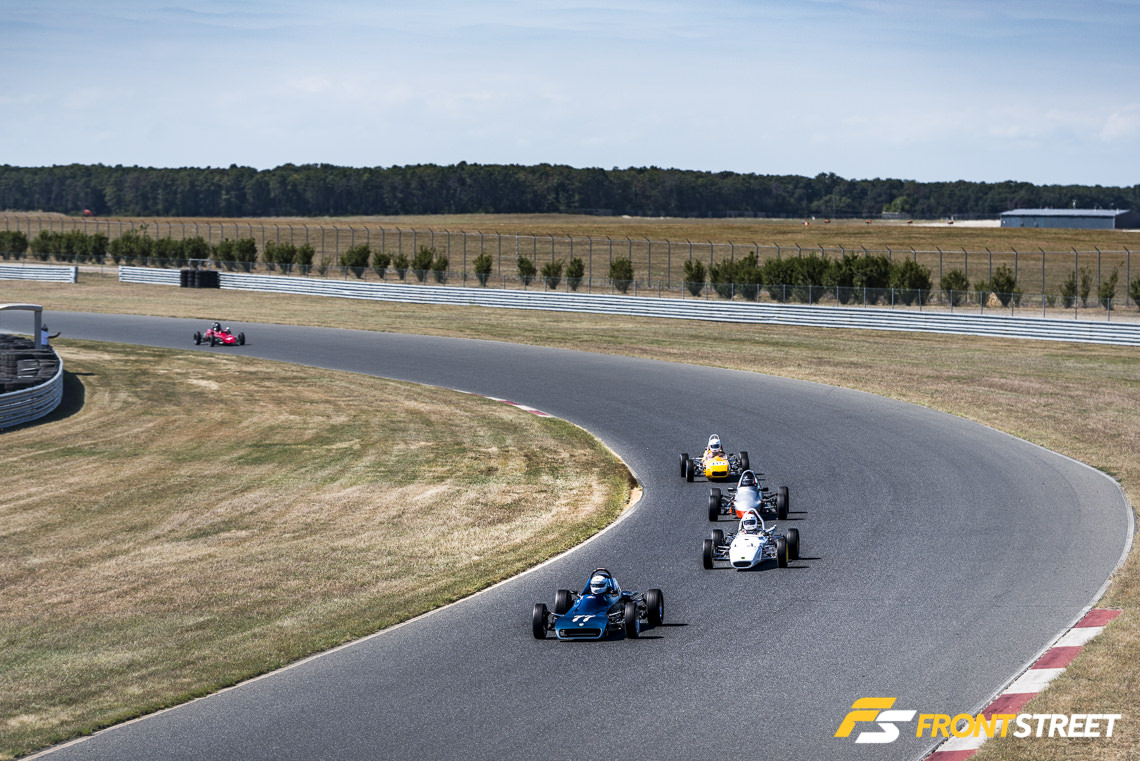
As their race concluded, the cars utilized a cool-down lap, where they give their engines and brakes a chance to calm down to normal operating temperatures – or at least closer to a normal operating temperature.
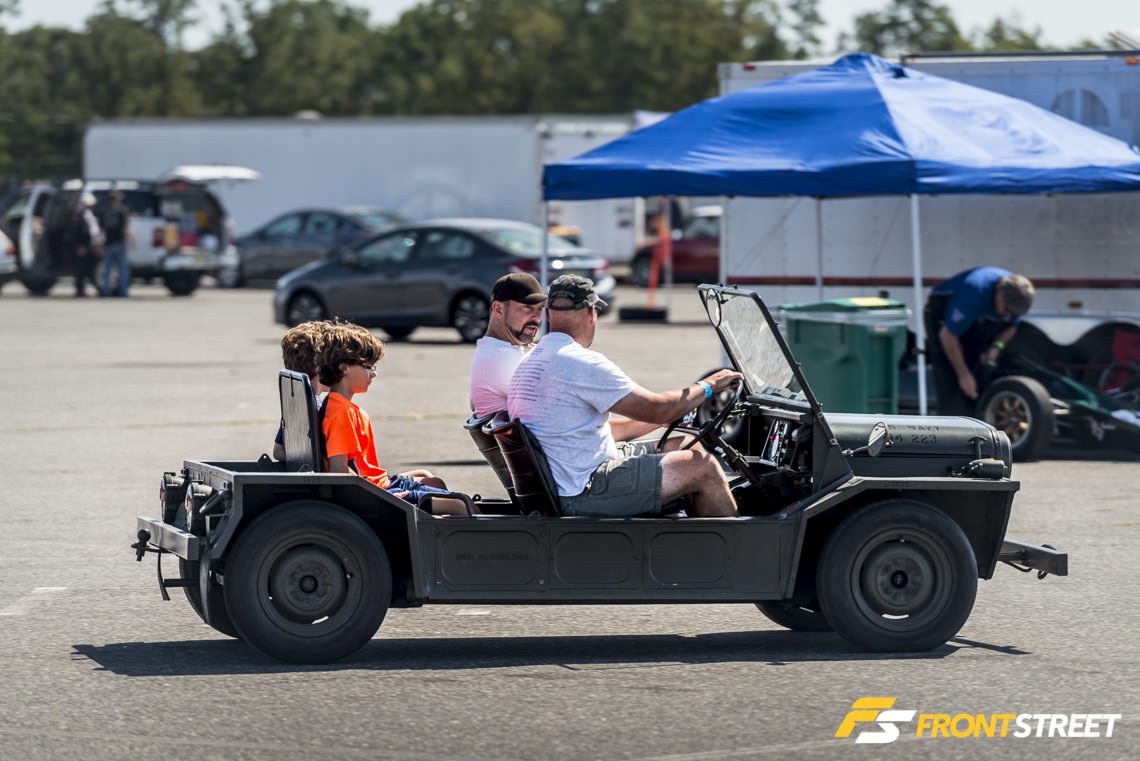
In between races, a few of these little Austin/Morris Mokes were travelling the span of the pits. Apparently if you have a vintage racecar and you need a pit vehicle, the rudimentary Moke is the preferred method of transportation.
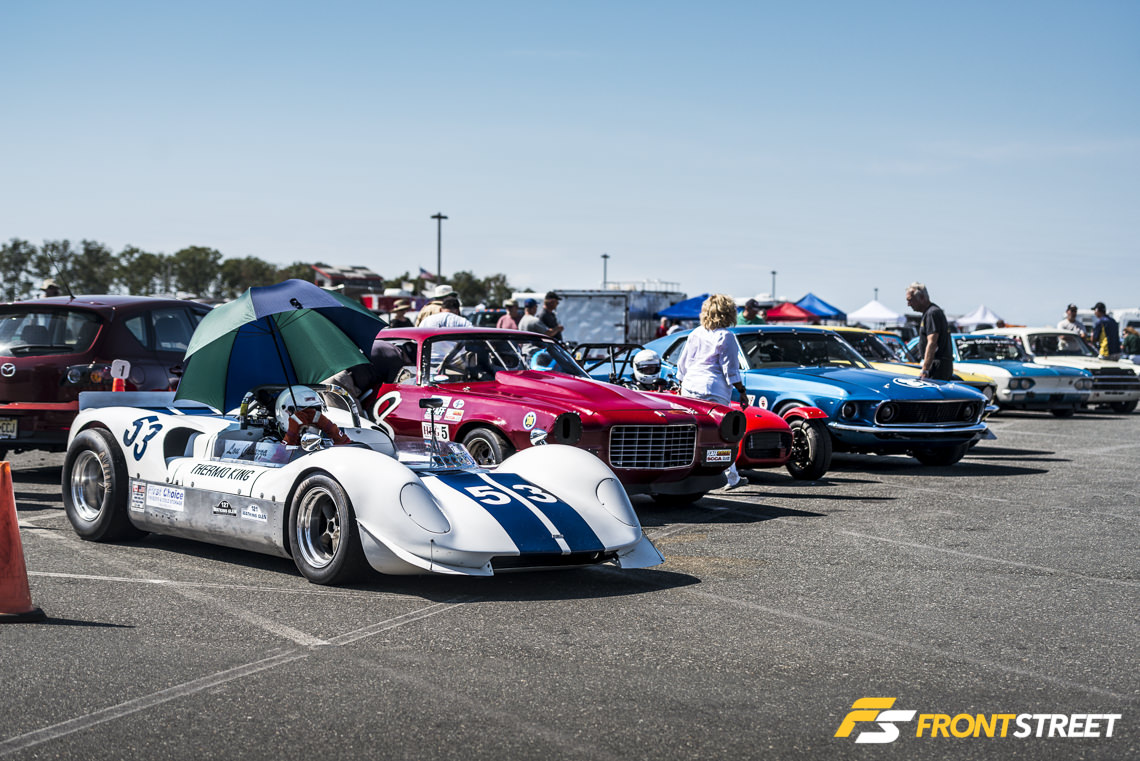
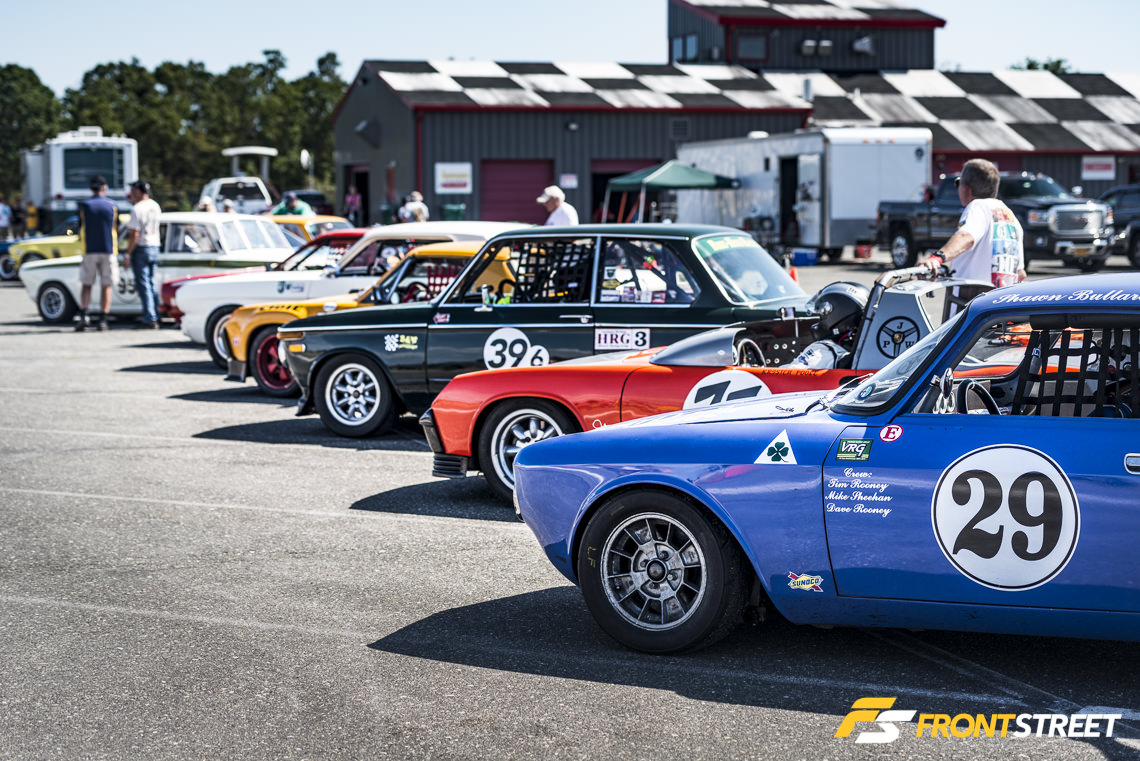
The afternoon continued as Group 3 filed into its grid positions in anticipation for the start of their race. Everything from the McKee and Camaro we mentioned earlier to a 1974 Alfa Romeo GTV make up this mixed class.
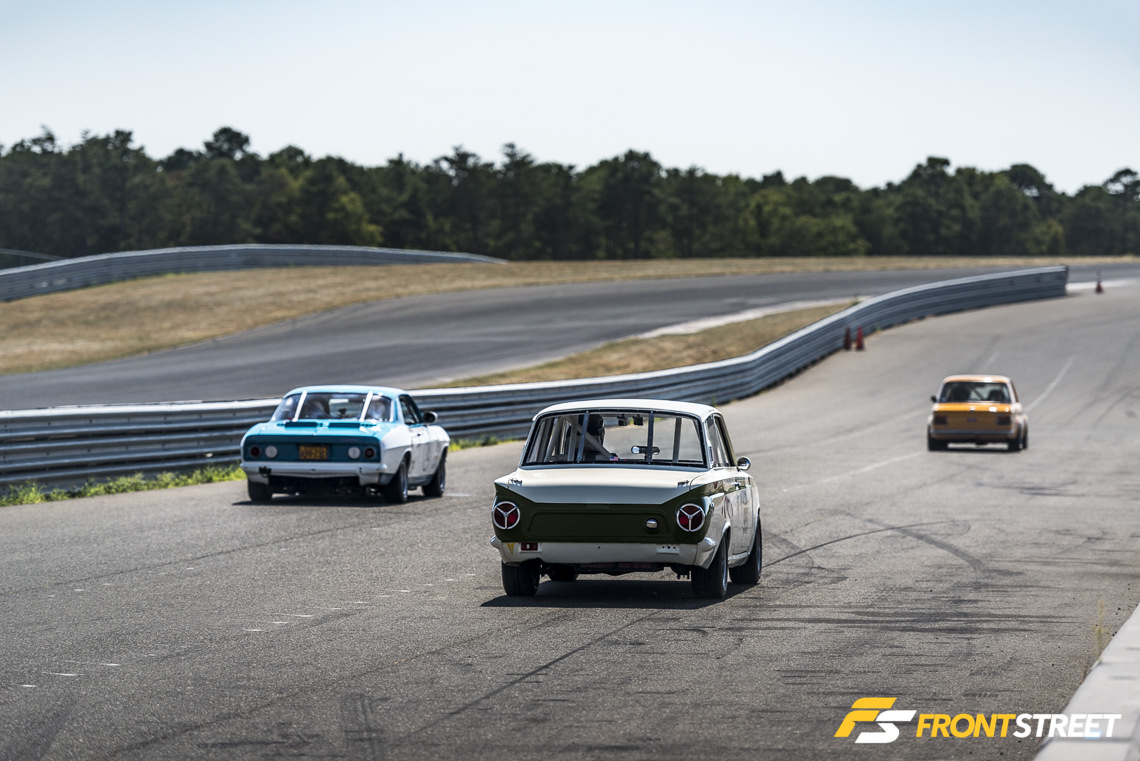
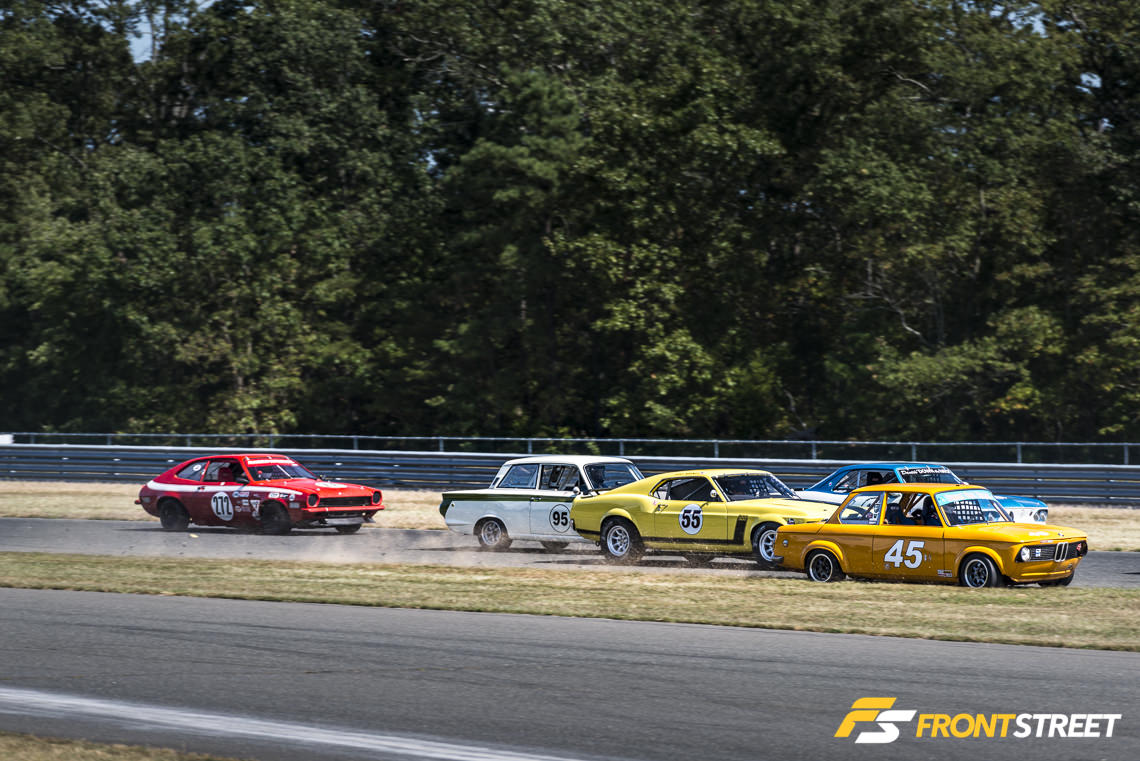
The tense atmosphere was brewing as they exited pit lane to start their warm-up lap. The chaos ensued as the green flag was dropped, forcing cars like this BMW 2002 onto the grass to pass slower cars on the crowded main straight.
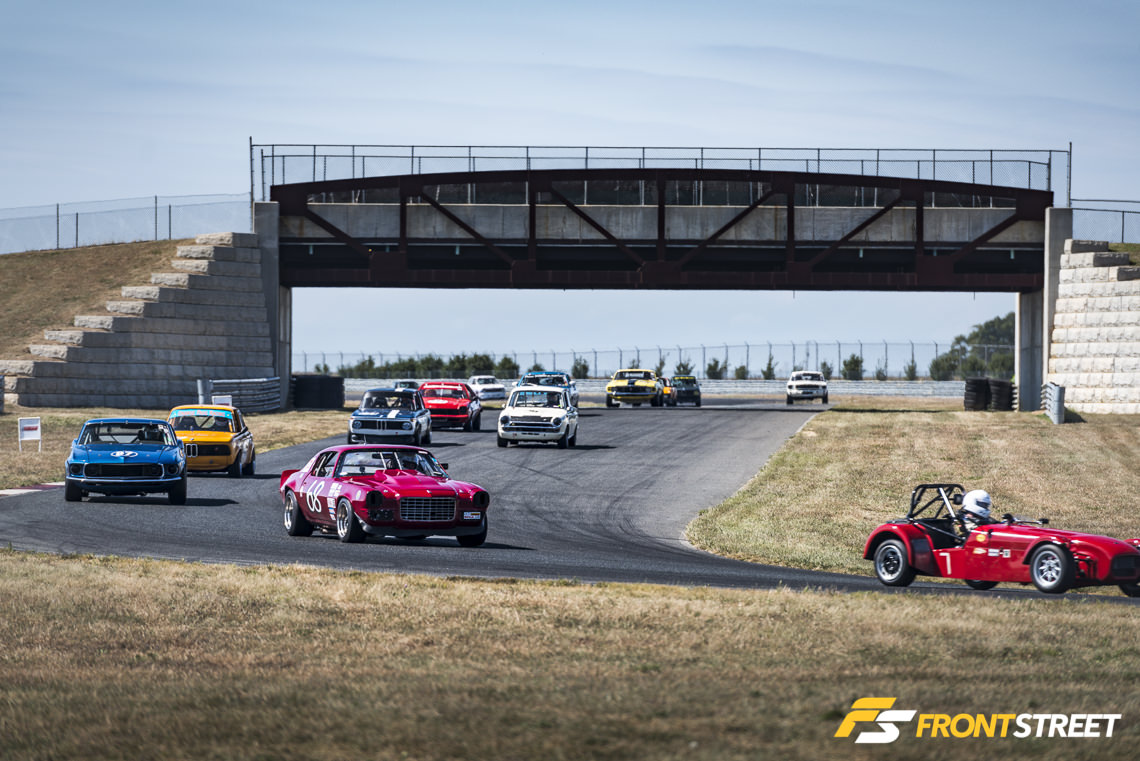
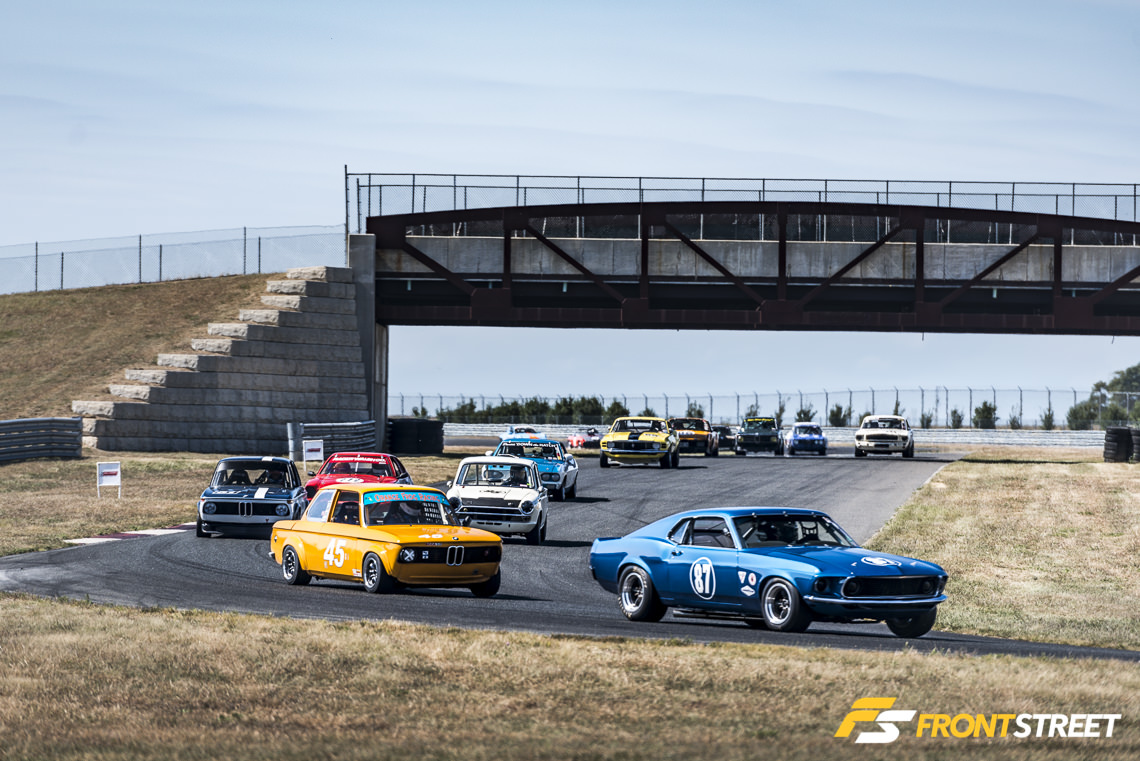
By the time the group had made it seven turns into lap one, the field had narrowed down to a linear running order with the McKee leading the pack.
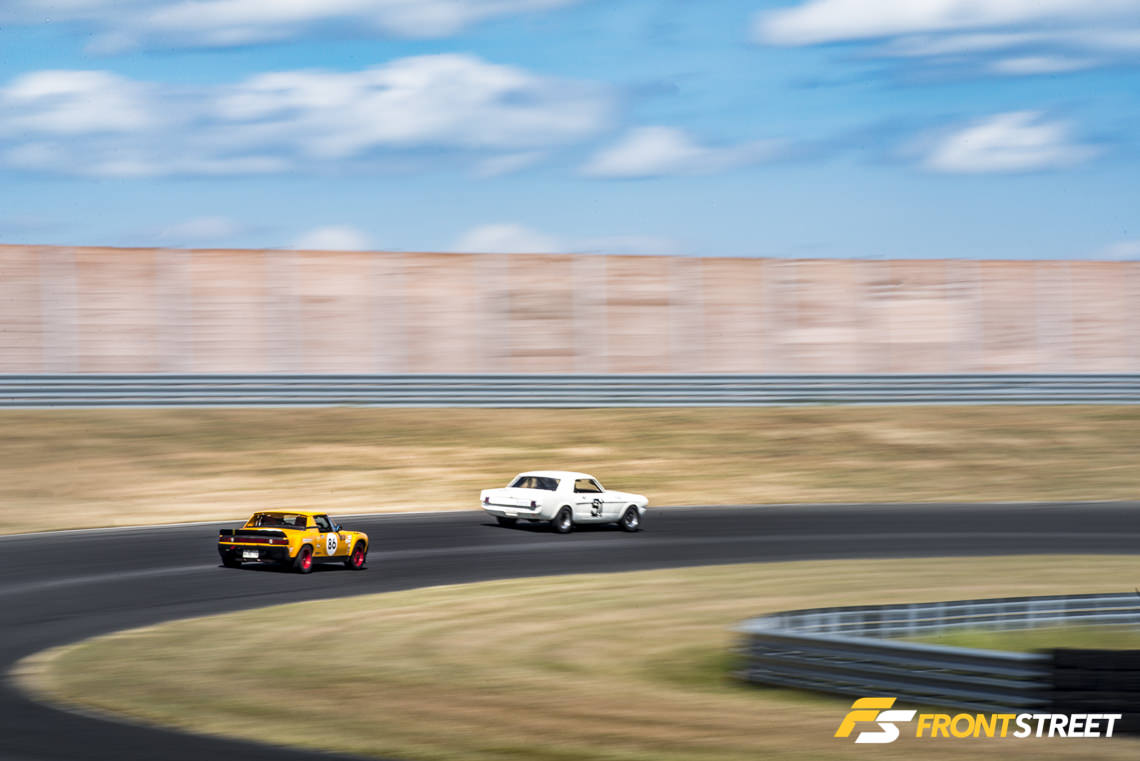
With each passing lap, Michael Spraggins’ Porsche 914 closed the gap on Mike Kincaid’s 1965 Ford Mustang. Despite a valiant effort, Spraggins was unable to make the pass, and the Porsche finished just behind the Mustang. The two cars provided some great racing for anyone spectating, including myself.
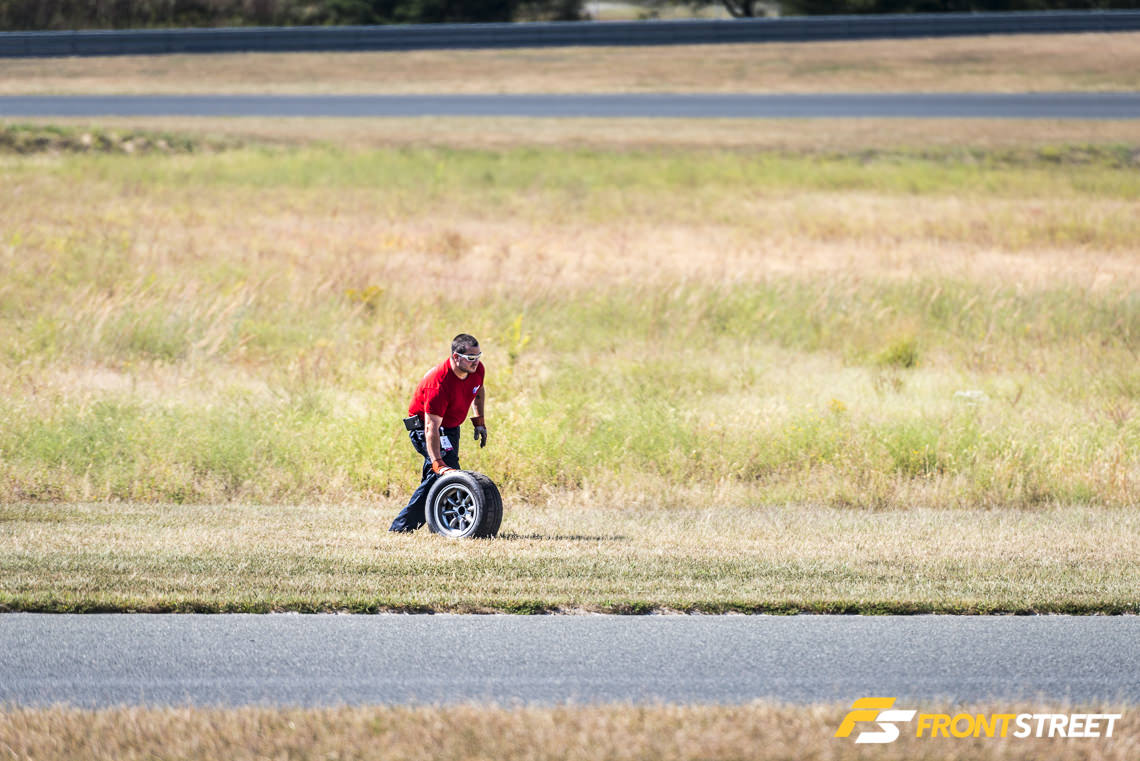
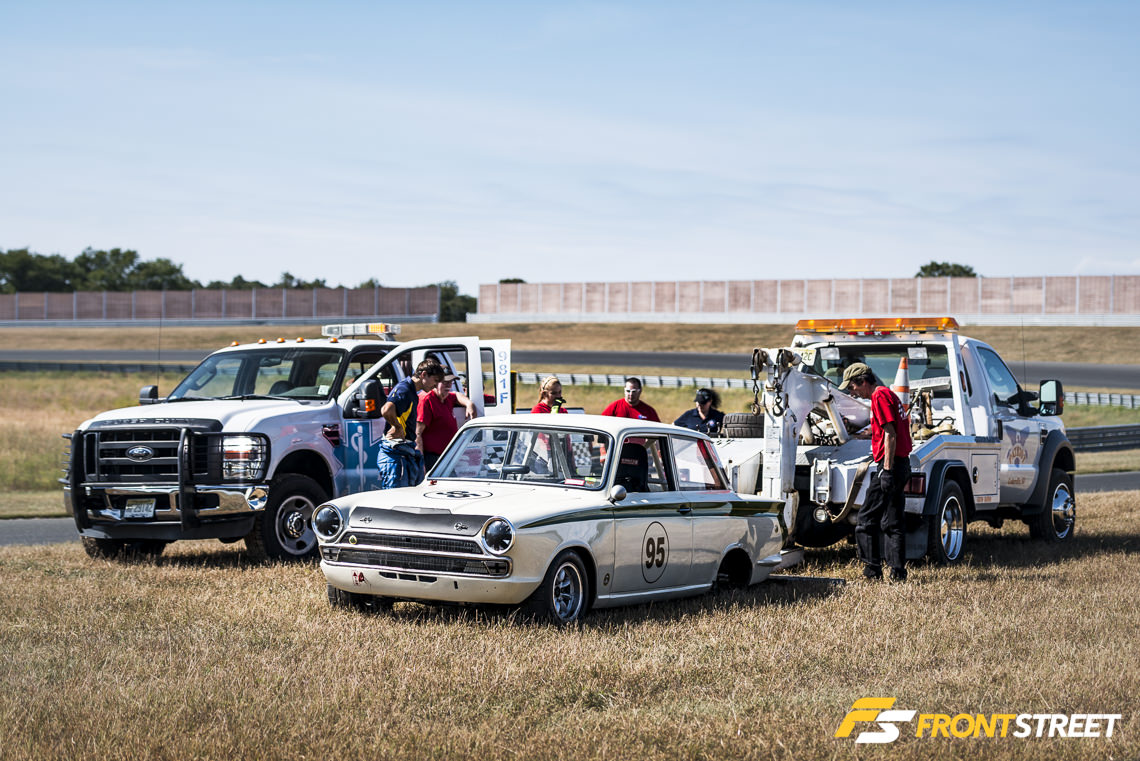
Unfortunately for Michael’s Vintage Racing – despite torqueing the lugs on the Lotus Cortina – something on the hub assembly broke off the driver’s side rear of the car during the race; the wheel had a premature separation, flying across the track and forcing the car’s early retirement. Luckily, the driver and the car were fine despite the bruised ego and missing wheel.
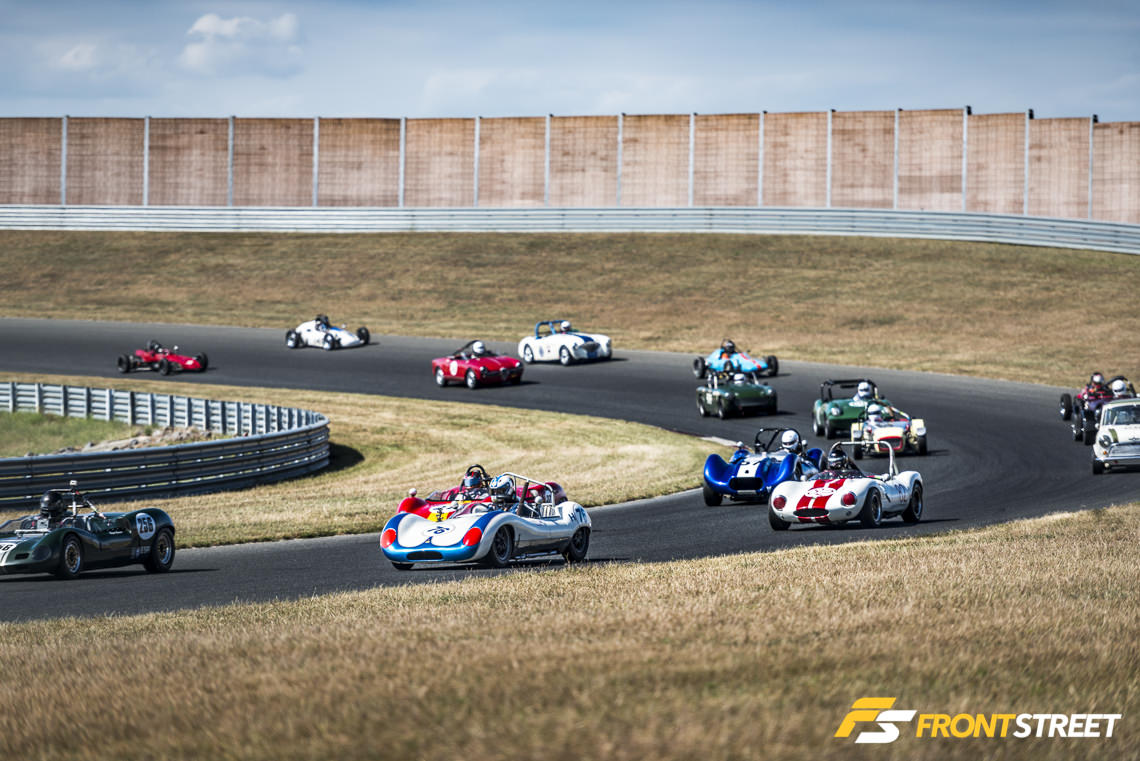
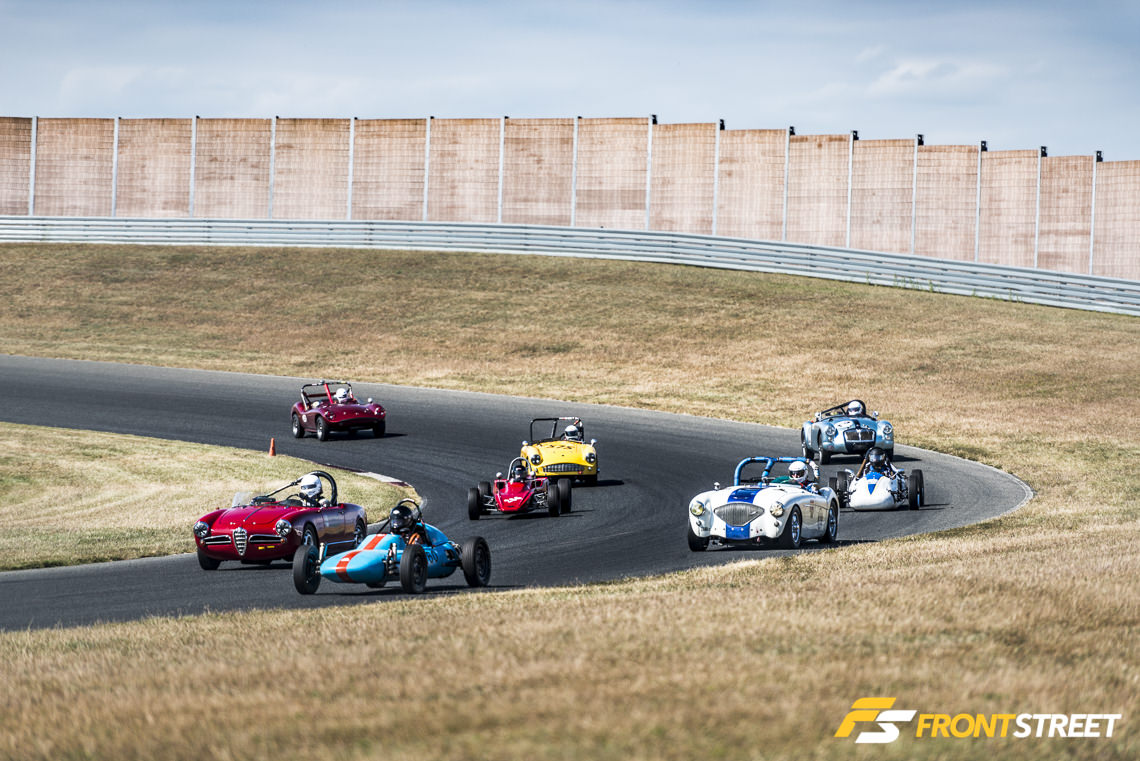
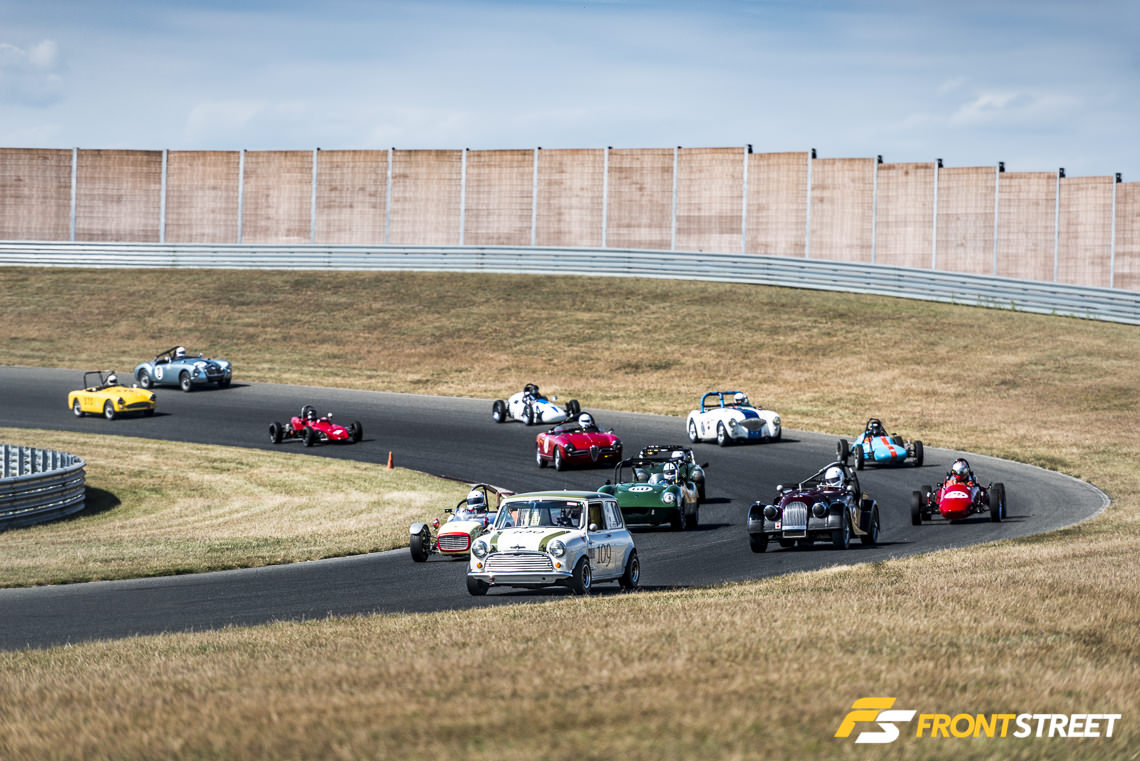
For the remainder of the afternoon, as one race ended, the next would begin nearly immediately. The field became progressively more crowded as the later groups combined open wheel Formula cars, and MG convertibles with a hardtop 1966 Morris Mini Cooper S.
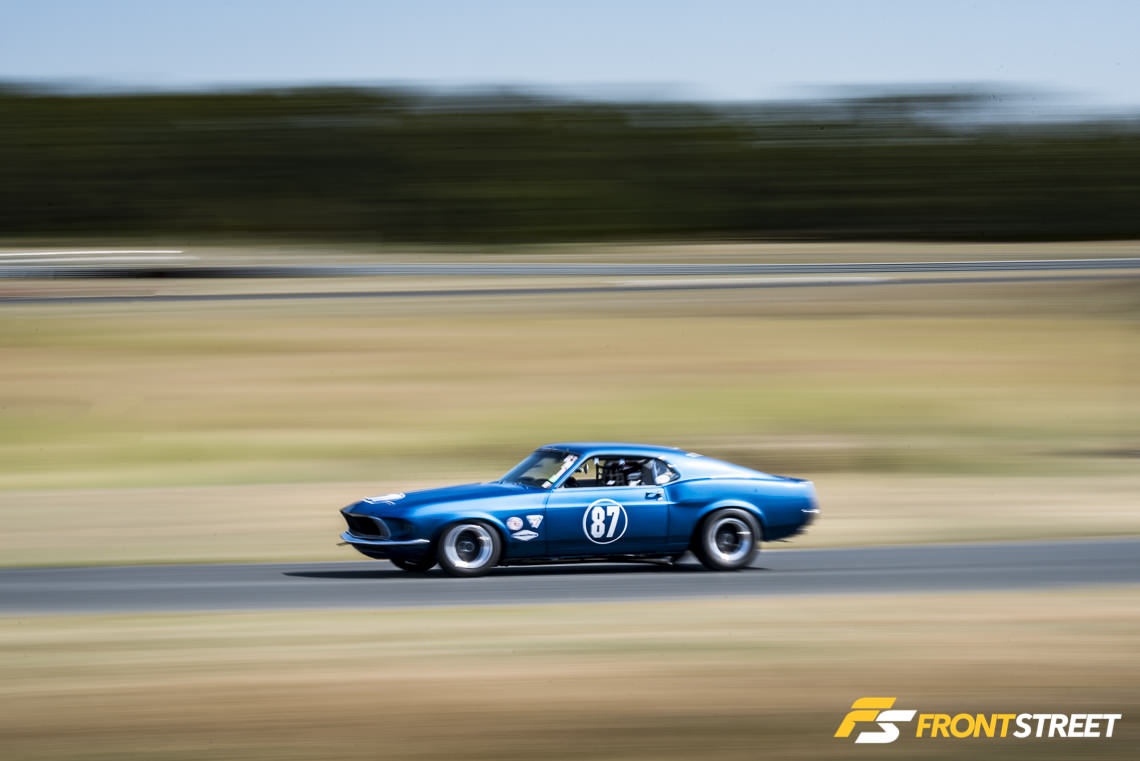
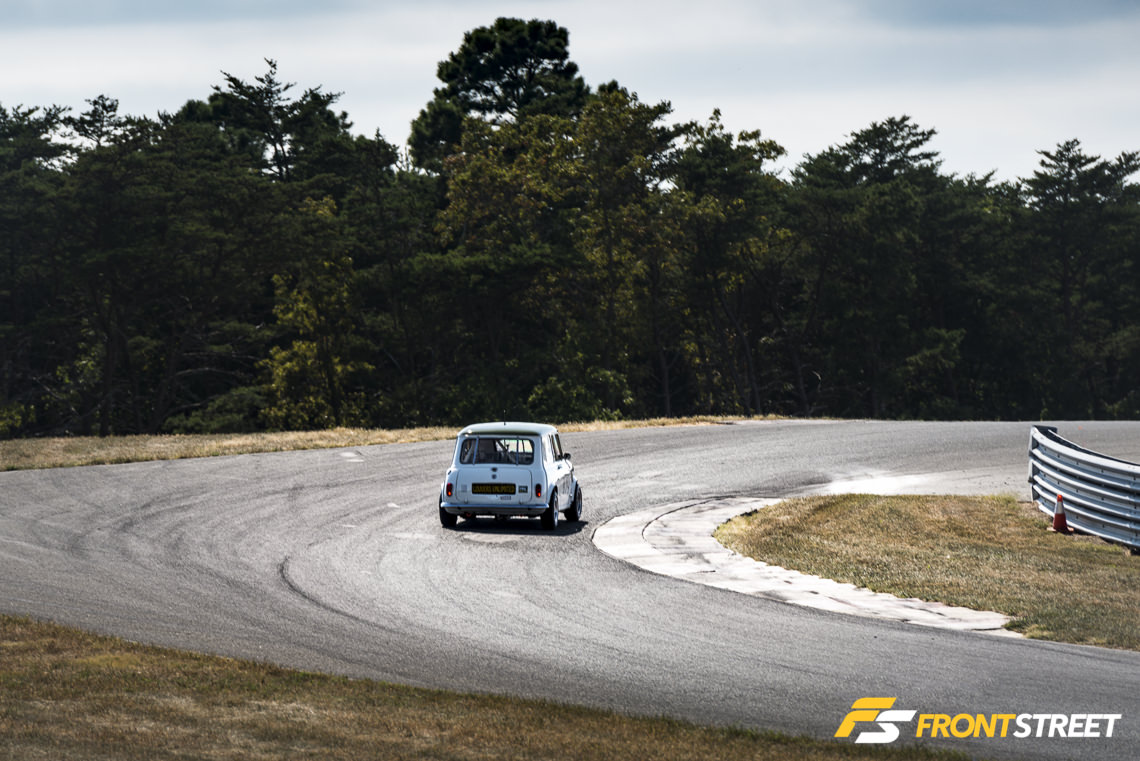
The checkered flag waved on the day’s festivities and the cars were all loaded into their trailers until their next weekend of racing. Watching such a wide variety of seasoned racecars battle for position on track to conclude my month of everything vintage automobiles was a special treat, and the perfect summary to the possibilities of these older forgotten machines.






















